

mathematics and statistics for Aotearoa New Zealand
Unit 1: Topic 1
Place value
5367 is the same as:

Guided practice
1 Show these numbers on the numeral expanders. a 2431 b 8276 or or or Can you think of any other ways to rename 5367?
Independent practice
Write each number:
1 in words. a 4568 b 8043
c 17 109
2 on the place value chart.
TThTh HTO
How do the numbers in words connect with the place value chart?

3 How many?
b
4
Rewrite the number of votes in the table from largest to smallest.
New
Zealand’s bird of the year votes 2024
1 Kea 4206
2 Ruru morepork 4467
3 Hoiho yellow-eyed penguin 6328
4Ka¯ ka¯ po¯ 4548
5 P ī wakawaka fantail 4205
6 Karure Chatham Island black robin 5442
5 Make the largest number possible with 1, 7, 8 and 0.
6 Make the smallest number possible with 3, 8, 2, 1 and 3.
7 Use the number from question 5 to find: a 10 more.
Extended practice
1
Unit 1: Topic 2 Addition mental methods
One-digit numbers can help you add bigger numbers. If you know: You also know: 6 + 3 = 9 16 + 3 = 19




























Guided practice
1 Find the answers.
4 + 3 = and 14 + 3 =

























2 + 6 = and 12 + 6 =


























8 + 2 = and 8 + 12 =




























































Independent practice
1 Extend the number facts to solve.
a 2 + 7 = and 22 + 7 =
b 5 + 3 = and 5 + 13 =
c 2 + 4 = and 12 + 14 =
d 1 + 8 = and 31 + 8 =
e 6 + 4 = and 6 + 34 =
2 Use doubles facts to solve.
a If 3 + 3 = 6, then 30 + 30 = .
b If 4 + 4 = , then 40 + 40 = .
c If 5 + 5 = , then 50 + 50 = .
d If 2 + 2 = , then + = 40.
e If 8 + 8 = , then + = 160
f If 1 + 1 = , then 100 + 100 =
g If 6 + 6 = , then 600 + 600 = .
h If 7 + 7 = , then 700 + 700 = .
What other mental addition methods could you use?

3
Split into 10s and 1s to add.
a 23 + 12 = + =
b 26 + 31 = + =
c 45 + 42 = + =
d 34 + 55 = + =
e 43 + 27 = + =
When adding in your head, it’s easier if you can make pairs that equal a 10.
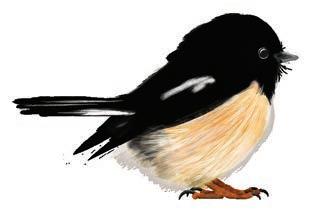
4 Rearrange the numbers to make them easier to add.
a 6 + 7 + 4 = + + =
b 5 + 4 + 25 = + + =
c 17 + 2 + 4 + 3 = + + + = d 3 + 11 + 2 + 19 = + + + =
5
a 90 + 9 0 =
c 4 + 37 =
e 21 + 68 =
g 61 + 17 =
h 14 + 3 0 + 6 = 30 6 5 47
Solve using a mental addition method of your choice.
b 46 + 52 =
d 17 + 8 + 3 + 12 =
f 50 0 + 500 =
Extended practice
The table below shows how many people went on each ride at the fair in a one-hour period.
Number of people 23 87 54 135 12 39 221
1 Write the numbers in the easiest adding order to find how many people went on:
a the carousel, big slide and tea cups.
b the big slide, tea cups and roller coaster.
c the carousel, dodgem cars and giant drop.
2 Add in your head to find how many people went on:
a the haunted house and the giant drop. + =
c the Ferris wheel and the haunted house. + =
b the dodgem cars and the roller coaster.
=
d the dodgem cars and the Ferris wheel. + =
e the roller coaster, the carousel, the tea cups and the big slide. + + + =
Unit 1: Topic 3
Addition written methods
Jump method for addition
Start with the larger number. Add the 10s, and then the 1s. 22 + 23
Where would you start if you were adding 2 hundreds numbers?
Guided practice
1 Use the jump method to solve.
16 + 21 =

Independent practice
1 Use the jump method to solve.
a 72 + 25 =
b 112 + 57 =
c 231 + 63 =
d 320 + 41 =
e 25 + 414 =
Vertical addition
When using vertical addition, you have to regroup if the total of a place value column is more than 10.
1 Start with the ones.
7 + 5 = 12
2 Now add the tens.
3 tens + 4 tens = 7 tens. We also need to add the regrouped ten, so we end up with 8 tens. 1
Guided practice
1 Solve using regrouping in the ones column.
Regroup the 12 for 1 ten and 2 ones
Independent practice
1 Rewrite these as vertical additions and solve.
a 28 + 47 b 63 + 19 c 46 + 25 d 35 8 + 22 e 432 + 19
Remember to line the numbers up in their place value columns.

16 8 + 206
2 Write these as vertical additions and solve.
a Serena counted 328 cars on the way to school and 453 cars on the way home.
How many did she count altogether?
b Arjun drove 236 km on Saturday and 607 km on Sunday.
How far did he travel on the weekend?
Extended practice
1 Use the jump method to solve.
a 375 + 427 = b 681 + 242 =
How are the jump method and vertical addition similar?

2 Use vertical addition to solve.
1375 + 415
2519 + 1002
3 Choose a method to find the answer.
FINAL
324 + 548 =
6356 + 1237
Unit 1: Topic 4 Subtraction mental methods
One-digit numbers can help you to subtract bigger numbers. If you know: You also know: Or: 7 – 2 = 5 17 – 2 = 15 27 – 2 = 25







Guided practice



































1 Find the answers. a 9 – 6 = and 19 – 6 =



















8 – 1 = and 18 – 1 =



























FINAL
6 – 4 = and 16 – 4 =

































What other subtraction methods could you use?









































Independent practice
1 Extend the number facts to solve.
a 5 – 3 = and 15 – 3 =
b 7 – 6 = and 27 – 6 =
c 9 – 4 = and 19 – 4 =
d 8 – 2 = and 28 – 2 =
e 6 – 3 = and 36 – 3 =
f 4 – 2 = and 84 – 2 = g 7 – 4 = and 97 – 4 =
Can you extend the number facts to work out 115 – 3 in your head?

2 Take away the 10s, then the 1s to subtract.
Subtracting to ten is a good method because it is easier to take away from a ten.
Subtract to a ten to solve.
a 26 – 8 = – – =


























b 32 – 7 = 32 – – =
































c 35 – 9 = 35 – – = d 21 – 6 = 21 – – = e 43 – 5 = 43 – – = f 64 – 7 = – – = g 76 – 9 = – – = h 145 – 8 = –

































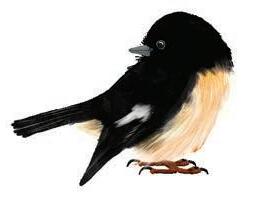


Extended practice
1 Use extended number facts to solve.
a 7 – 5 = and 70 – 50 =
b 9 – 2 = and 90 – 20 =
c 8 – 4 = and 80 – 4 0 =
d 4 – 2 = and 40 0 – 200 =
e 6 – 5 = and 60 0 – 500 =
2 Solve in your head.
a Baxter had 28 balloons. 14 of them popped. How many are left?
b 94 children were at the bus stop. 35 got on the first bus. How many are left?
c Eloise made 164 cups of lemonade. She sold 23 cups in the first hour. How many cups does she still need to sell?
d Brittany picked up 132 pieces of rubbish on the first day of National Clean Up Week. Ashley arrived late and only picked up 8. How many more than Ashley did Brittany pick up?
Unit
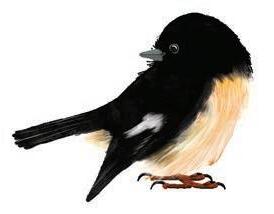
Independent practice
1 Use the jump method to solve.
a 98 – 3 4 =
b 360 – 43 =
c 798 – 51 =
d 598 – 125 =
FINAL
e 372 – 203 =
Vertical subtraction
In vertical subtraction, you have to regroup when the number you are subtracting is bigger than the number you are taking away from.
2 Now subtract the tens. We regrouped 1 ten from the first number to the ones. That leaves: 6 tens – 2 tens = 4 tens
Guided practice
1 Start with the ones to solve.
1 Start with the ones. You c an’t do 3 – 6. Regroup 1 ten from the tens column for 10 ones. 13 ones – 6 ones = 7 ones
2 Solve using regrouping from the tens to the ones column.
Independent practice
Remember to line the numbers up in their place value columns.
1 Rewrite as vertical subtraction and solve.
a 34 – 17 b 51 – 3 3 c 85 – 36
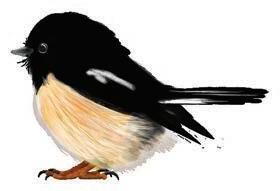
182 – 163 e 793 – 447
891 – 206
2 Write as vertical subtraction and solve.
a Bet ty the baker made 97 cup cakes. She sold 58 of them. How many are left?
b Suresh had $644. He spent $415. How much does he have left?
Extended practice
1 Solve using the jump method.
a 742 – 216 =
b 628 – 343 =
2 Solve using vertical subtraction. a b c
3 Choose a method to find the answer. 9 62 – 457 =
Unit 1: Topic 6
Inverse operations
Subtraction undoes addition. 10 + 5 = 15 15 – 5 = 10






























Guided practice
Inverse means opposite.

1 Use the addition facts to complete the subtraction facts.




a 7 + 5 = 12 12 – 5 =




















b 24 + 9 = 33 33 – 9 =







































c 38 + 7 = 45 45 – 7 =



























2 Use the subtraction facts to complete the addition facts.

a 9 – 3 = 6














































































Independent practice
1 Complete the families of fact.

2
Use each set of numbers to make 2 addition and 2 subtraction equations.
You can use addition to check your subtraction answers and subtraction to check your addition answers.
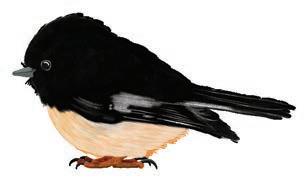
Extended practice
Using rounding sometimes makes addition and subtraction easier. For example, we can make tidy tens: 45 + 39 is the same as 45 + 40 – 1 = 84.
1 Solve these additions using rounding and subtraction.
a 34 + 28 is the same as 34 + − 2 = .
b 26 + 29 is the same as 26 + − 1 = .
c 53 + 49 is the same as 53 + − =
2 Working with families of fact and split numbers
This is how it works with two equations from page 24.
Split the 7
Add 1 to round 39 to 40, and then subtract 1 to undo the addition. makes 10
a Split the 8 to make two new equations.
Split the 8
b Split the 9 to make two new equations.
Split the 9
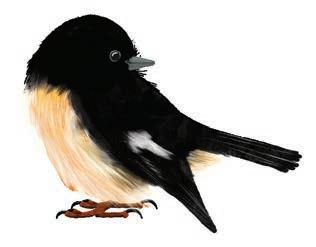
d Tr y the same activity with other simple equations. 7 +
c Here are two number facts: 11 + 8 = 19 and 19 – 8 = 11 Use a book or spare paper to make different equations by splitting the 11.
Unit 1: Topic 7
Multiplication and division facts
Multiplication and division are inverse operations.


1 group of 2 is 2. 2 shared between 1 is 2.


2 groups of 2 are 4. 4 shared between 2 is 2.


Guided practice
What other inverse operations do you know?
1 Use the multiplication facts to complete the division facts.















a 3 groups of 5 = 15. 15 shared between 3 is .







b 2 groups of 6 = 12. shared between 2 is .




















c 4 groups of 7 = 28. shared between 4 is .














2 Use the division facts to complete the multiplication facts.








a 9 shared between 3 is 3. groups of 3 = 9.









b 16 shared between 4 is 4. groups of 4 = .

























c 18 shared between 3 is 6. groups of 6 = .

Independent practice
1 Complete the multiplication facts to match the pairs of arrays.



































































































We use the × sign for “groups of” or multiplication, and the ÷ sign for sharing or division.


























2 Complete the families of fact.
3 × 9 = 27
10 × 2 = 20
Estimating and checking
Without counting, do you think they can each have 4 jelly beans? Yes? No?
Now we need to check.



There are 8 jelly beans. There are 2 people. 8 ÷ 2 = 4.
Answer: Yes, they can.
3 Do you think they can each have 5 jelly beans?

There are jelly beans.
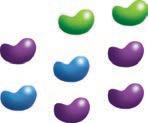

Now check.
4 Do you think they can each have 5 marbles?


There are people.
=
Answer:















Now check.
There are marbles.
There are people. ÷ = Answer: Yes No
5 Do you think they can each have 4 marbles?
Now check. Yes No




















There are marbles.
Answer: Yes No
There are people.
Extended practice
1 There are 5 chocolates in each box.
How many in:
a 3 boxes?
c 7 boxes?

b 6 boxes?
d 10 boxes?
2 Circle the correct ending to the sentence.
The numbers in the 3 times table pattern are:
a all odd.
b all even.
c sometimes odd and sometimes even.
3 The table below shows the number and cost of each item sold at the school fair.
a Complete the table to show how much money each student raised.
b Who sold the most items?
c Who raised the most money?
d How much money would Serena have raised if she sold 8 items?
e How much money would Mika have raised if he sold 20 items?
f How many items would Sophia have sold if she raised $63?
Independent practice
1 To multiply by 4: double, then double again.
7 × 4 = 7 × 2 × 2 = 14 × 2 = 28




















































































Use double, then double again to solve these sums.
a 8 × 4 = 8 × 2 = × 2 =
b 20 × 4 = 20 × 2 = × 2 =
c 12 × 4 = × = × =
d 30 × 4 = × = × =
To divide by 4: halve, then halve again.
÷ 4
2 Use halve, then halve again to solve.
÷ 2 =
a 16 ÷ 4
again
÷ 2 =
b 40 ÷ 4
c 60 ÷ 4
Multiplication facts can help with division.
15 ÷ 3 Think 3 × = 15. The answer is 5.
3 Solve these sums.
a 26 ÷ 2 Think 2 × = 26, so 26 ÷ 2 = .
b 27 ÷ 3 Think 3 × = 27, so 27 ÷ 3 = .
c 45 ÷ 5 Think 5 × = 45, so 45 ÷ 5 = .
d 55 ÷ 5 Think 5 × = 55, so 55 ÷ 5 = .
e 120 ÷ 10 Think 10 × = 120, so 120 ÷ 10 = .
4 Jeremy has a recipe for 20 pikelets, but he needs to be able to halve and double the quantity. Complete the recipes for 10 and 40 pikelets. ? 13
Pikelet recipe (makes 20)
250 g self-raising flour
70 g caster sugar 2 eggs
240 g milk
a Pikelet recipe (makes 10)
g self-raising flour
g caster sugar eggs
g milk
Do you know any other shortcuts to help you work out multiplication and division equations in your head?
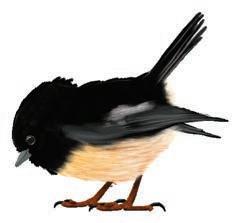
b Pikelet recipe (makes 40)
g self-raising flour
g caster sugar eggs
g milk
Extended practice
1 Use your choice of method to solve.
a Four teams with 16 people in each were going to the stadium. How many seats were needed on the bus?
b At the end of the game 84 people were divided equally onto 4 buses. How many people were on each bus?
c The front section of the stadium has 5 rows with 12 seats in each. How many people can sit there?
FINAL
d 20 0 oranges were shared between 10 teams. How many oranges did each team get?
Independent practice
1 Solve with the split method.
a 5 × 13 = 5 × + 5 × = + =
b 6 × 21 = 6 × + 6 × = + =
c 4 × 32 = 4 × + 4 × = + =
d 7 × 24 = × + × = +
e 5 × 45 = × + × = +
f 8 × 33 = × + ×
g 3 × 58 = × + ×

Extended practice
1 Solve using your choice of written methods. Show how you got your answer.
a 4 × 37 b 6 groups of 16
FINAL
c Morgan bought 5 sets of football cards. Each pack costs 90 cents. How much did he spend? Write the answer in dollars and cents.
d Nouf ordered 1 doughnut for each of her birthday guests and 3 extras, in case more guests arrived. She bought 4 boxes with 26 doughnuts in each. How many guests was she expecting?
Unit
Topic 1
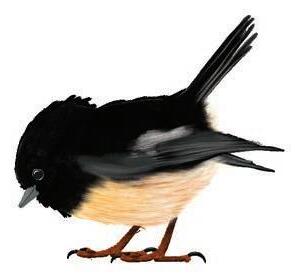
Independent practice
1 Label each pair of equivalent fractions.
2 Colour and label an equivalent fraction for:
Think about the place value.
Zero point one (0.1) can also be read as one-tenth ( 1 10 ).
You can write 1 10 as the decimal 0.1. 1 10 = = 0.1
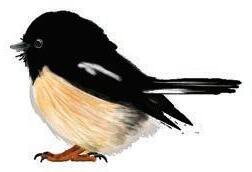
3 Shade the boxes and write each fraction as a decimal.
4 Complete the number line.
Extended practice
1 Divide a whole number by 10 to get a decimal number.
2 If you divide 10 by 10, will you get a decimal number? Explain.
3 Circle the equivalent fractions and decimals.
< means less than, > means more than and = means the same.

Unit 2: Topic 2
Improper fractions and mixed numbers
An improper fraction has a numerator bigger than the denominator. You can change an improper fraction into a mixed number. = 6 4 = 1 1 2
Guided practice
Fill in the gaps.
Why do you think they are called mixed numbers?
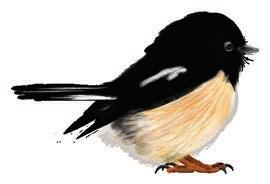
Independent practice
1 Change the improper fractions to mixed or whole numbers.
2 Order from smallest to largest. a 1, 1 2 , 2 1 2 , 1 1 2 , 3, 2
Smallest Largest b 4 6 , 1 2 6 , 3 6 , 1, 5 6 , 1 1 6 , 2 6
Smallest Largest
How will you know where to put each fraction?
3 Match the improper fractions and mixed numbers to the correct places on the number line.
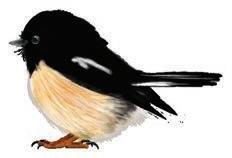
4 Change the fractions in question 3c to mixed or whole numbers.
5 Fill in the gaps.
Extended practice
1 Write an improper fraction and a mixed number for the diagrams.
Improper fraction Mixed number
2 Which fraction is bigger?
Unit 2: Topic 3 Fractions of
You can use division to work out the fraction of a group.









Guided practice


1 Circle the objects in two equal groups. Complete the division.












1 Complete the divisions.
2 of 20 =
4 of =
2
There are 20 beads in this bag. How many of each colour?
3 The remaining beads in the bag are purple. Write the number and fraction of purple beads. purple beads or of 20
4 Find the fraction in each group.
Extended practice
1 Draw lines to match.
2 Find the fraction in each group from question 1.
3 There are 15 players in Tim’s rugby union team, but 1 5 of them couldn’t come to training because they were sick. How many players were missing from training?
4 Amiria saved $250 for a new mountain bike. She bought her bike on sale and only spent 1 2 of her money. How much did she spend?
5 Heath picked 78 feijoas. He kept 1 6 for himself and gave the rest to his aunty for jam. How many feijoas did Heath keep?
Unit 2: Topic 4
Adding and subtracting fractions and decimals
We can add or subtract fractions with the same denominator.
Guided practice
1 Add the fractions.
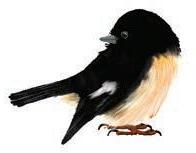
2 Subtract the fractions.
Independent practice
1 Write the number sentence.
2 Use two colours to shade each diagram, to match the addition number sentence.
3 Use the diagrams to help complete the subtraction number sentences.
You can show tenths as fractions and decimals.
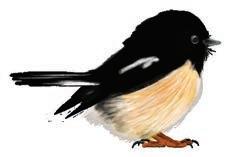
4 Write the tenth fractions as decimals, then add or subtract.
5 Add and subtract the decimals.
Extended practice
1 Add the fractions.
2 Write the missing fractions to make 1.
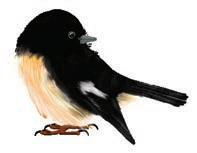
3 Write the missing fractions.
4 Write the missing decimals.
Unit
You can make 50c in different ways.
Guided practice
How could you make 50c using 4 coins?

1 Draw any coins to show 3 ways to make these amounts. a 70c
b $1
c 40c
Independent practice
1 Draw 3 coins to make these amounts. a 3 0c
2 Show the smallest number of coins you could use to buy these items.



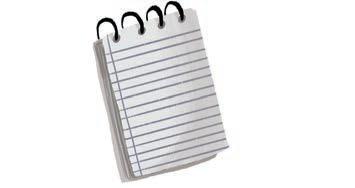
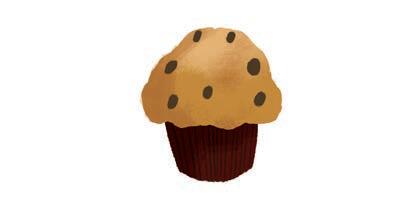
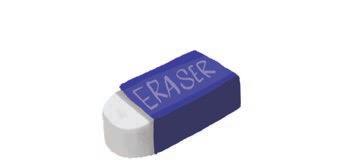
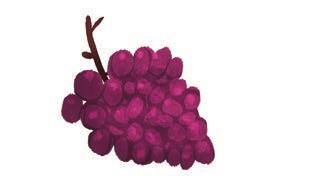

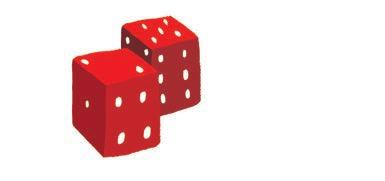
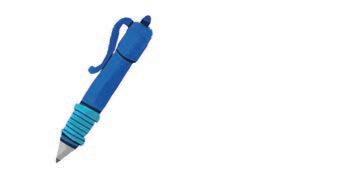
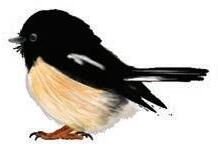
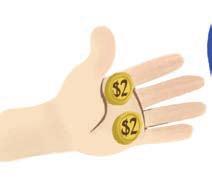
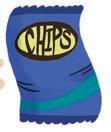
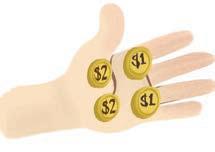

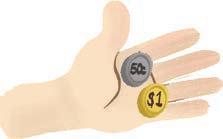

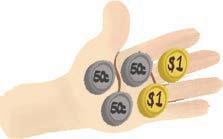

Extended practice
1 Money amounts not ending in 0 are rounded. Round these amounts to the nearest 10c.
21c
$1.03
6 8c
$2.99 If the price ends in 1, 2, 3 or 4 you round down. If the price ends in 5, 6, 7, 8 or 9 you round up. 35c rounds up to 40c.
4 4c
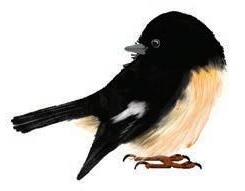
2 Round the amounts to the nearest dollar, then calculate to get an estimated total.
Lunch and drink costs Rounded amounts Es timated total
$11.90 + $4.20
$20.05 + $2.95
+
3 Calculate the actual costs and change for the problems in question 1. a $9.99 + $4.81 = Change from

$11.90 + $4.20 = Change from c $20.05 + $2.95 = Change from



4 If you paid $20 for an item that costs $19.94 would you receive any change? Explain.
Unit 4: Topic 1
Number patterns
Rule: Add 3
Guided practice
1 Follow the rule to finish the pattern.
a Rule: Add 5
b Rule: Subtract 3
c Rule: Add 6
d Rule: Subtract 4
e
Each number in the pattern is 3 bigger than the one before it.

1
2 Fill in the missing numbers and write the rule.
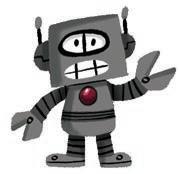



a Complete the diagram and number pattern.
b What is the rule?
a Complete the diagram and number pattern.
b What is the rule? 5
The numbers in addition patterns get bigger and the numbers in subtraction patterns get smaller.
a Make your own addition pattern.
Rule:
b Make your own subtraction pattern.
Rule:
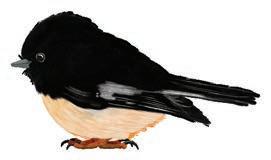
Extended practice
This pattern has a 2-step rule. Rule: Add 4, subtract 2
1 Write the 2-step rules. a Rule:
b Rule:
2 Follow the rule to finish the pattern.
a Rule: Add 1, add 3
b Rule: Subtract 2, subtract 3
3 Make your own 2-step pattern. Rule:
Unit 4: Topic 2
Number sentences
The = sign shows that both sides are the same.
2 × 10 = 10 + 10 =
Guided practice
1 Complete the number sentences. a 3 × 6 = 6 × 3 =
What would happen to the scales if 2 × 10 was replaced with 3 × 10?
c 20 ÷ 2 = 30 − 20 =
2 Were all of the equations in the last activity balanced? Explain your answer. 20 20
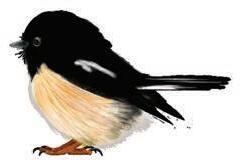
b 5 × 10 = 25 + 25
Independent practice
1 Make the equations balance.
33 – 3 = 15 +
7 – 7 = 12 –
2 Use + or − to complete.
3
Use × or ÷ to complete.
a 6 4 = 24
18 2 = 9
c 10 7 = 70 d 5 9 = 45
e 4 5 5 = 9 f 24 6 = 4
g 8 8 = 1 h 23 0 = 0
4 Tick true or false.
a 50 – 29 = 8 + 13 True False b 23 + 32 = 6 0 – 7 True False
c 3 × 12 = 36 ÷ 6 True False
50 ÷ 5 = 2 × 5
False e 60 + 6 0 = 10 × 12 True False
5
Write a number sentence to solve each word problem.
a Nadine wants 100 balloons at her birthday party. Each pack contains 25 balloons. How many packs of balloons does she need to buy?
b Gordana needs 200 points to get to the next level. She has 153. How many more points does she need?
c Aroha bought 4 cartons of eggs. Each carton contains 12 eggs. How many eggs does he have in total?
d Spiro read 42 pages of his book on Monday, 14 on Tuesday and 28 on Wednesday. How many pages did he read altogether?
Extended practice
1 Fill in the gaps to complete the number sentences.
a + 15 = 30
c – 23 = 61
e × 8 = 48
g 45 ÷ = 9
i 26 + 3 4 = 100 –
k 147 – = 96 + 15
2 Write number sentences to solve.
b 48 – = 44
d 35 + = 89
f 7 × = 28
h ÷ 5 = 11
j 78 – 4 6 = 19 +
l + 83 = 180 – 32
a What number added to 14 gives the same answer as 60 minus 2?
b What number subtracted from 100 gives the same answer as 32 added to 23?
c When this number is added to 78, the answer is the same as 200 minus 32. What is the number?
d There were 35 boys and 54 girls at a concert. 40 people had seats, the rest had to stand. How many had to stand?
Unit 5: Topic 1
Length and area
Length
Shorter lengths are measured in centimetres (cm).
Longer lengths are measured in metres (m). There are 100 cm in 1 m.
In real life, the guitar would be 96 cm longer than the eraser.
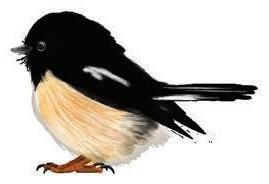
Guided practice
The length of the eraser is 4 cm.
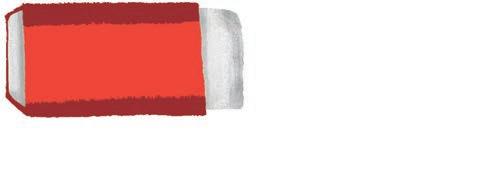
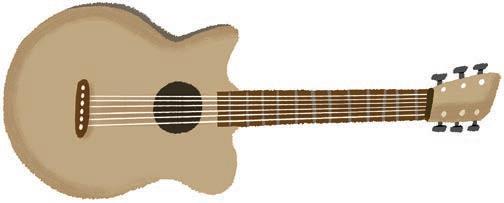
The length of the guitar is 100 cm or 1 m.
1 Use a ruler to find the lengths of these items.


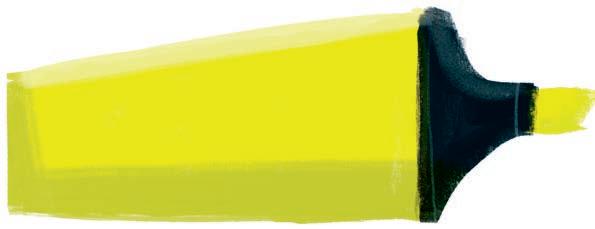
2 Measure the perimeter of these shapes.
Independent practice
1 Create your own personal measures for the lengths in the table. For example, 30 cm might be equal to two of your handspans. 1 m might be equal to 6 of your foot lengths.

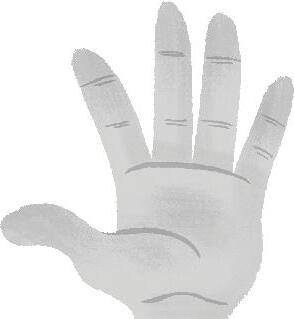

2 a Use your personal measures to help you find classroom items that match the lengths in the table. Record the items in the table.
b Now measure the items and record the actual lengths.
FINAL
3 Would you use cm or m to measure the length of:
a the classroom?
b this book?
c your house? d a chocolate bar?
Area
A square centimetre is 1 cm wide and 1 cm high. We use square centimetres to measure area. The abbreviation of square centimetres is cm2.
Guided practice
1 Record the area of each shape.

2 Write the letter of the shape that has: a the largest area. b the smallest area.
3 Which 2 shapes have the same area?
Independent practice
1 Use the cm2 grid paper to draw:
a a blue square with an area of 9 cm2.
b a red rectangle with an area of 10 cm2.
c 2 different green rectangles, each with an area of 12 cm2.
d a yellow square with an area of 4 cm2.
2 What is the total area of the shapes in question 1? cm2
3
a Estimate the area of the shape below. cm2
b Find the area of the blue square. cm2
c Find the area of the red rectangle. cm2
d What is the total area? cm2
Extended practice
1 Millimetres (mm) are used to measure very small lengths, or when you need very accurate measurements. There are 10 mm in 1 cm.

Estimate in your head, then measure these lines in mm.
2 Square metres are used for measuring large areas. A square metre (m2) is 100 cm by 100 cm.
PLAN OF MY BACKYARD
Record the area of:
a the cubby. m2
b the pool. m2
c the picnic table. m2
d the path. m2
3 How much bigger is the cubby than the picnic table? m2
Unit 5: Topic 2
Volume and capacity
This centicube is 1 cm high, 1 cm wide and 1 cm long. It is also called a cubic centimetre or 1 cm3 .
This 3D shape has a volume of 8 centicubes or 8 cm3 . What different meanings can the word volume have?
Guided practice
1 Write the volumes.

cubic centimetres cubic centimetres or cm3 or cm3
cubic centimetres cubic centimetres or cm3 or cm3
cubic centimetres cubic centimetres or cm3 or cm3
Independent practice
Use the layers to find the volume.
a How many layers?
b How many cubic centimetres in each layer?
c Total volume: cm3
a How many layers?
b How many cubic centimetres in each layer?
c Total volume: cm3
a How many layers?
b How many cubic centimetres in each layer?
c Total volume: cm3
a Which shape from the questions above has the biggest volume?
b Which shapes from the questions above have the same volume?
c How much greater is the volume of the shape in question 3 than the shape in question 2?
Capacity
Millilitres (mL) and litres (L) are two units of capacity.
There are 1000 mL in 1 L.
A soft drink can holds less than 1 L.
Guided

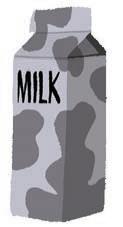
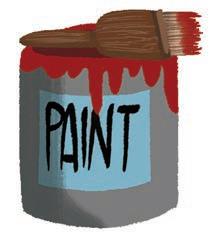
A
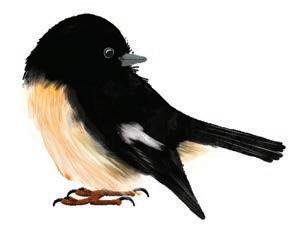
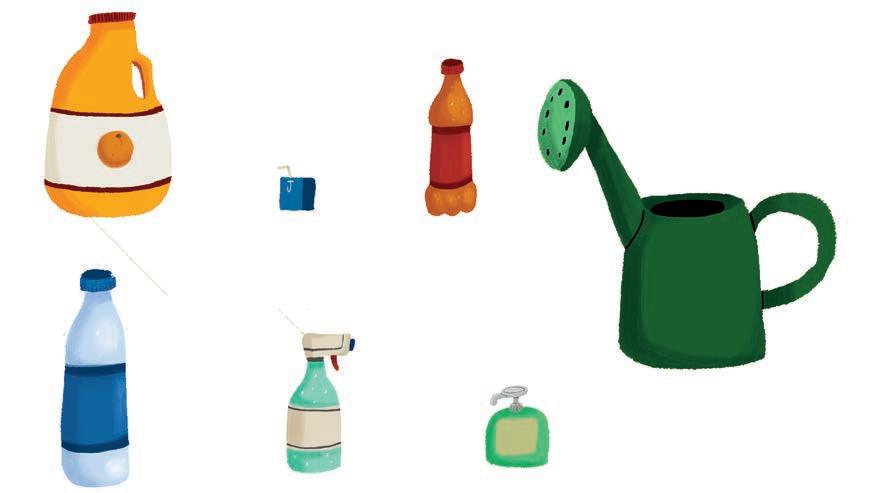
a Write the letters of the items that hold less than 1 L.
b Write the letters of the items that hold more than 1 L.
c Write the letters of the items that hold exactly 1 L.
d Which item has the biggest capacity?
e Which item has the smallest capacity?
Independent practice
1
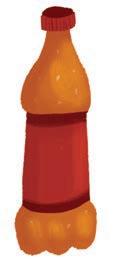



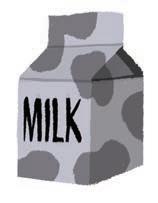

a Which 2 items together have a capacity of 1 L?
b Which 2 items together have a capacity of more than 1 L?
c What is the capacity of the sunscreen and the yoghurt?
d What is the capacity of the detergent and the milk?
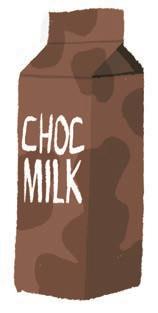
2 You will need a 1 litre container.
a Choose 3 other containers and record them in the table below.
b For each container, estimate the capacity as more or less than 1 L.
c Use your 1 litre container to check. Record the results.
Container
I think it will hold … It actually holds …
more than 1 litre. less than 1 litre.
more than 1 litre. less than 1 litre. more than 1 litre. less than 1 litre. more than 1 litre. less than 1 litre. more than 1 litre. less than 1 litre. more than 1 litre. less than 1 litre.
Extended practice
1
a Use centicubes to make a 3D shape with a volume of 12 cm3
b Draw your shape.
2
a Use centicubes to make a 3D shape with a volume of 10 cm3
b Draw your shape.
3 Find 3 containers and record them in the table below.
a Es timate and record the capacity of each in mL.
b Measure and record the actual capacity in mL.
c Which container has the biggest capacity?
d Which has the smallest capacity?
Unit 5: Topic 3 Mass
The mass of lighter objects is measured in grams (g).

15 grams or 15 g
There are 1000 g in 1 kg.
Guided practice
The mass of heavier objects is measured in kilograms (kg).
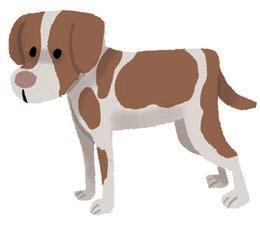
15 kilograms or 15 kg
Is your mass closer to that of the cookie or the dog?
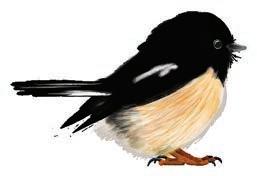
1 Write the item letters in order from lightest to heaviest. a
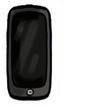

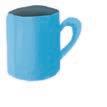


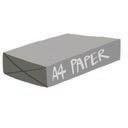





2
a Which item from question 1 is the heaviest?
b Which item is the lightest?
Independent practice
1 You will need a 1 kg weight.
a Choose 4 items in the classroom that you can easily pick up. Record them in the table below and tick whether you estimate each is heavier or lighter than 1 kg.
b Hold your 1 kg weight in one hand and heft each item in the other hand. Tick whether each item feels heavier or lighter than 1 kg.
FINAL
c Check your 4 items using a pan balance and rewrite them in the c orrect columns below. Lighter than 1 kg
d Find and list 2 items that have a mass of about 1 kg.
2 You will need a 500 g weight.
a Find 2 items that you think will each have a mass of less than 500 g. Write the items in the table below.
b Use a pan balance to check if they are less than (<) or more than (>) 500 g.
Item
Result
Less than 500 gMore than 500 g
What is the total mass of two 500 g weights?

c List 2 items that you think have a mass of about 500 g each.
d Use a pan balance to check if the mass of each item is close to 500 g.
If an item has a mass that is close to 500 g, draw a circle around its name in question 2c.
3 Find counters, blocks or other small objects.
Es timate and then check with a pan balance how many of your objects are needed to balance:
a a 10 g weight. Es timate: Actual:
b a 20 g weight. Es timate: Actual:
c a 50 g weight. Es timate: Actual:
4 Write the mass letters in order from lightest to heaviest. There are 1000 g in 1 kg.
Extended practice
1 Read the scales and record the mass.
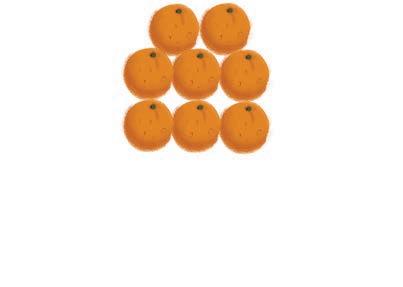
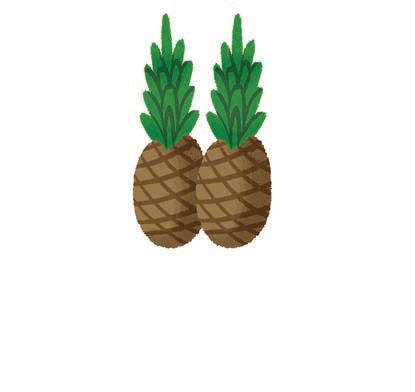


2 Look at the scales in question 1. What is the mass of: a 1 orange? g b 1 pineapple? kg
c 1 strawberry? g d 1 banana? g
3 How much heavier are:
a the pineapples than the oranges?
b the bananas than the strawberries?
c the oranges than the bananas?
d the pineapples than the bananas?
Unit
5: Topic 4
Time
The marks between each number on a clock represent 1 minute.
mins
The minute hand is pointing to the 35th minute so the time is 3:35 or 25 minutes to 4 .
Guided practice
1 Write the analog and digital times.
There are 60 minutes in 1 hour. Each of the numbers on the clock is 5 minutes apart. You can count by 5s to tell the time more quickly.
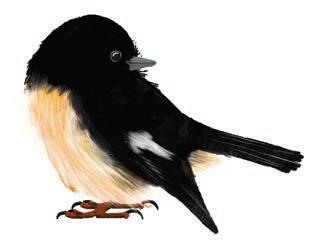
FINAL
Independent practice
1 Draw in minute hands to show the times below.
2 Draw in hour hands to show the times below.
3 Draw in the hour and minute hands to show the times below.
Duration
The things we do take time.
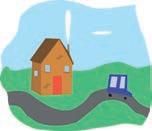
going to a friend’s house

eating a cupcake
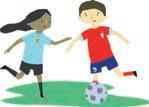
lunchtime at school
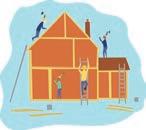
building a house
4 Write the activities (A, B, C, D) in order from the shortest to the longest time they take.
Shortest time
5 Write these units of time from shortest to longest. minute, second, day, hour
6 Think about these activities.
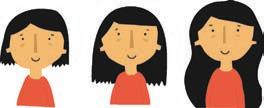

Longest time
1, 2, 3, 4, 5, 6, 7, 8, 9, 10

eating one pizzacounting to 10 growing long hair
eating one pizzacounting to 10 growing long hair 1, 2, 3, 4, 5, 6, 7, 8, 9, 10
a Which would take a few seconds to do?
FINAL
eating one pizzacounting to 10 growing long hair 1, 2, 3, 4, 5, 6, 7, 8, 9, 10
b Which would take a few minutes to do?
c Which would take a few months to do?
7 Draw or write something you do that matches each time. It takes about one hour. It takes about one minute.It takes 10 minutes.
Extended practice
1 How many minutes until:
2 How long until:
8:00?
5 to 8?
3 Use hours or minutes to describe the duration of each activity in the table. In the last row, write the start and finish time as well as the duration.
Walking a dog
Dinner party 6:15 9:00 Flight from Auckland to Christchurch
Your school lunchtime
Unit 6: Topic 1 2D shapes
A regular shape has all its sides of the same length and all its angles of the same size.
An irregular shape does not have all sides of equal length and does not have all angles of the same size.
Guided practice
1 Match the quadrilaterals with their descriptions.
• regular shape
This irregular pentagon has one pair of parallel sides and two right angles.

• 4 sides are the same length
• 4 angles are the same size
rectangle
parallelogram
• irregular shape
• 1 pair of parallel sides
• irregular shape
• 2 pairs of parallel sides
• irregular shape
• 4 right angles
• 2 pairs of parallel sides
trapezium
regular pentagon
irregular pentagon

Independent practice
1 Complete the descriptions and name each shape. a Name:
Parallel lines: Yes No
Regular: Yes No
No. of sides:
FINAL
Parallel lines: Yes No
Regular: Yes No
No. of sides:
Parallel lines: Yes No
Regular: Yes No
No. of sides:
Parallel lines: Yes No
Regular: Yes No
No. of sides:
Parallel lines: Yes No
Regular: Yes No
No. of sides:
2
Write 3 points to describe each shape, and then name it.
FINAL
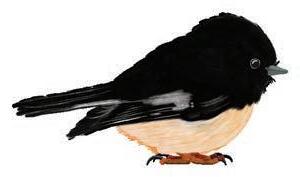
You can also think about corners and angles to help describe shapes.
Extended practice
1 You can make new shapes by joining 2 shapes together.
Draw lines to show 2 shapes that join to make the shapes below. Then name the two shapes you have made.
2 Make and draw a new shape with these shapes.
FINAL
3 Name and describe one of the shapes you made. Name:
Unit 6: Topic 2 3D shapes

Guided practice
You can describe 3D shapes by their faces, edges, and corners (vertices).
1 Match the 3D shapes with their descriptions.
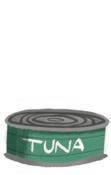
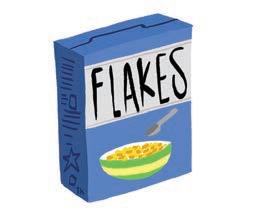
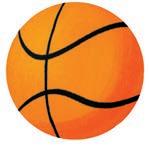
• polygon as a base
• all other faces are triangles
• perfectly round 3D shape
FINAL
2 Circle all the pyramids.
• shape with a circular base and a point at the tip


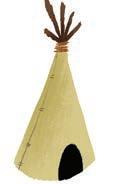
• 2 parallel bases the same shape
• all other faces are rectangles
• shape with 2 circular ends and 1 curved face
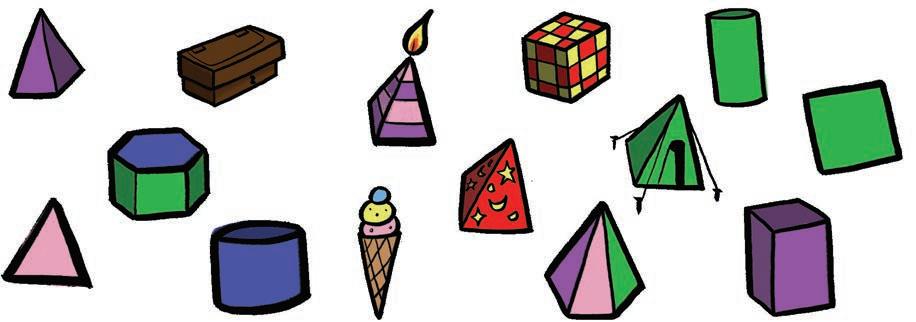
A B C D E F G
a Write the letters of the 3D shapes that are prisms.
b Match the letters from question 1a to the descriptions of the prisms below.
c Draw a square prism. 3 pt
I have 10 corners and 15 edges. The shape of my bases has 5 sides.
All my faces are the same shape, but not the same size. I have 8 corners.
I have 16 corners. I have 10 faces. I have 24 edges.
I have 5 faces. I have 6 corners. I have 9 edges.
d What is another name for a square prism?
2
Circle all the 2D shapes you need to make these 3D shapes.
Make sure you circle 1 shape for every face of the 3D shapes.
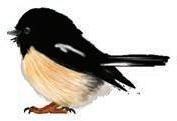


Similarity: Difference:
FINAL
3 Write 1 similarity and 1 difference between these shapes.
Similarity: Difference:
Similarity: Difference:
Similarity: Difference:
Extended practice
When a 3D shape such as a box is flattened out, the 2D shape is called a net .
1 Match the nets to the 3D shapes. This is the net of a cube.
2 a Draw a prism.
b Name your prism.
c Write a description of your prism.
Name:
cube
Unit 6: Topic 3
An angle is the amount of turn between 2 arms.
A square corner angle is known as a right angle. A right angle is a quarter of a full turn. This angle is smaller than a right angle. This angle is larger than a right angle.
The lines that make up an angle are called arms. The point where the 2 arms meet is the vertex. If the arms are at right angles, they called called perpendicular.
Guided practice

1 Tick whether each angle is smaller, larger or equal to a right angle.
Independent practice
1 Find and draw 3 things in your classroom that have a right angle.
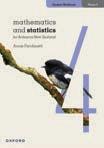
2 Circle the shapes that have 90 degree angles.
FINAL
3 Circle whether each angle is smaller, larger or equal to a right angle.
4
Look at the angles marked between the clock hands.
A B C D E F
a At what times do the hands make a right angle?
b Which clock shows the closest angle to 180 degrees?
c Which clock shows the closest angle to 360 degrees?
What would the angle look like if it were 6 o’clock?

5 Which is closest to each angle: 90 (right angle), 180 (straight angle) or 360 (full turn) degrees? Write 90, 180 or 360 in the answer box.
Extended practice
1 a Find and draw 4 angles in the classroom.
b Write a description to classify your angle compared to 90, 180 and 360 degree angles.
Angle 1
Angle 2
Angle 3
Angle 4
2 Draw lines to match the angles that are the same size.
Unit 6: Topic 4 Symmetry
An object has line symmetry if one side is a mirror image of the other.
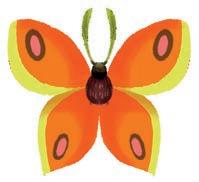
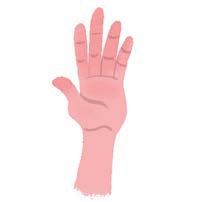
This square is symmetrical. This butterfly is symmetrical. This hand is not symmetrical.
Guided practice
1 Tick if each item is symmetrical or not.

Line symmetry can be horizontal, vertical or even diagonal.
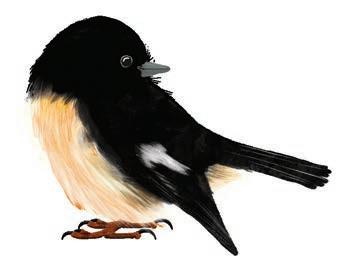

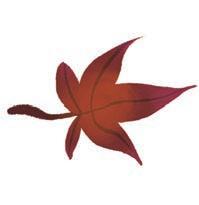
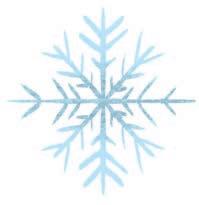
Independent practice
1 Draw 1 line of symmetry on each shape.
2 Draw 2 lines of symmetry on each shape.
FINAL
3 a Which shape in question 2 has exactly 3 lines of symmetry?
b Which shapes have exactly 4 lines of symmetry?
An object has rotational (turning) symmetry if it turns around its middle and fits on top of itself before it gets back to the beginning.
Can you think of a letter that has line symmetry and rotational symmetry?

4 Circle the letters that have rotational (turning) symmetry.
5 Draw lines of symmetry on each shape with rotational symmetry.
FINAL
6 a Imagine you can rotate this pattern. Count the starting position as “1”. How many times will it fit on top of itself before it gets back to the beginning?
b Colour the shapes to make a pattern with 2 lines of symmetry.
c Draw in the lines of symmetry.
Extended practice
1 Draw pictures with horizontal and vertical line symmetry.
2 Create a picture or pattern with rotational symmetry on the grid.
FINAL
Unit 6: Topic 5
Flips, turns and slides
Objects can be transformed by flipping, turning or sliding.
What different meanings does the word “slide” have?
A flip (reflection) is when an object is turned over to be a mirror of itself.
A turn (rotation) is when an object is rotated.
A slide (translation) is when an object moves without flipping or turning.

Guided practice
Flip, slide or turn?
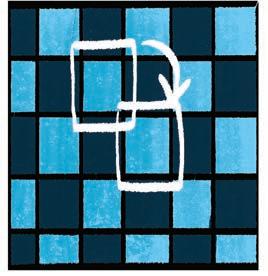
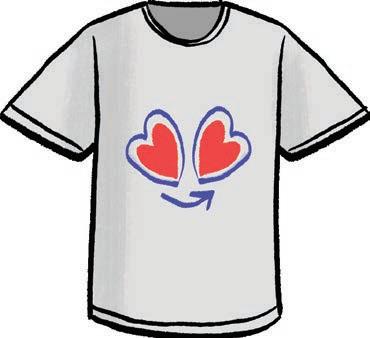
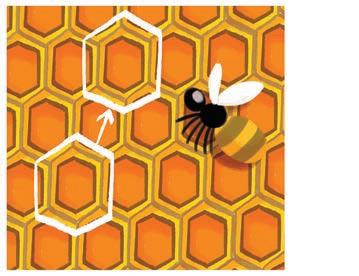

Independent practice
1 Follow the rules to make repeating patterns.
a slide, then quarter-turn clockwise
b half-turn, then quarter-turn clockwise
c flip, then slide
d quarter-turn anticlockwise, then half-turn
e half-turn, slide, then quarter-turn anticlockwise
2 a Make your own slide and turn pattern.
b Write the rule for your pattern.
3 Slide, turn or flip? a b c
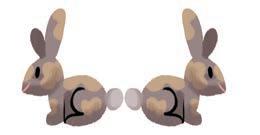
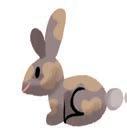
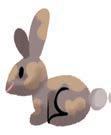


4 Find 2 examples of flip, slide or turn patterns in your classroom.
a Draw each pattern.
b Label the transformations.
Extended practice
1 Circle and label slides, turns and flips in these designs.
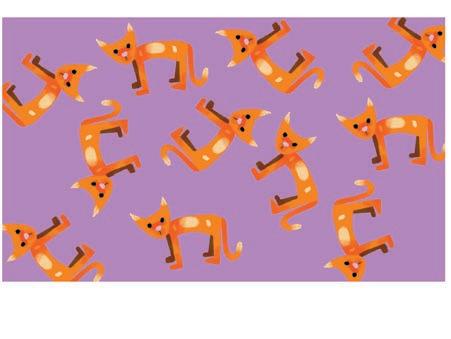
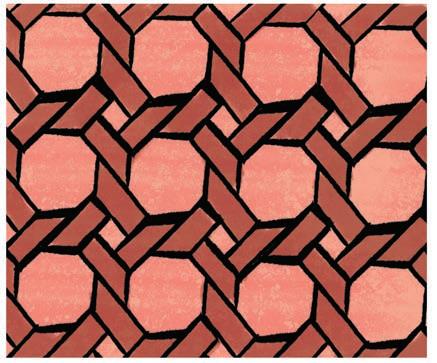
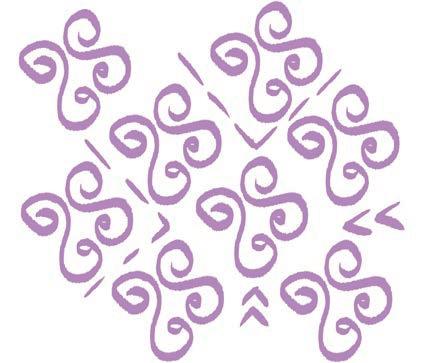
FINAL
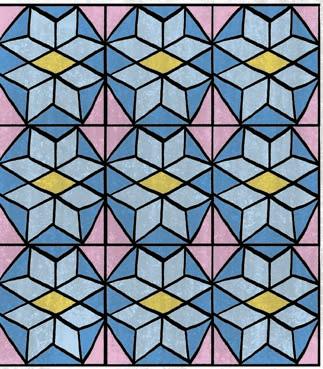
2 Design your own T-shirt patterns using slides, turns and flips.
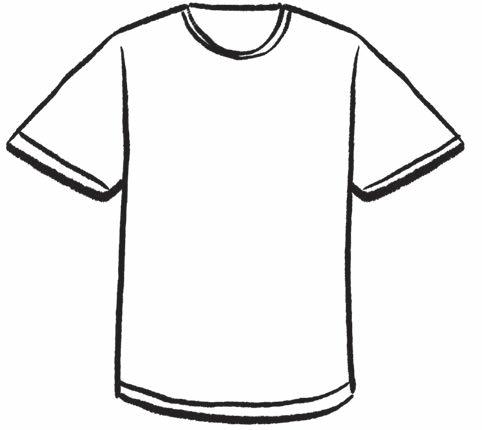

Unit





The tree is at B3.
The boy is at E1.
The station is at E4.
To find what is at D2, put one finger on D and another on 2 and move them along the lines until they meet.
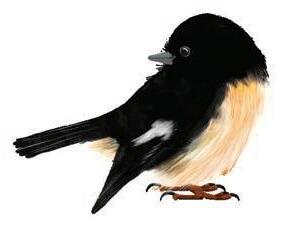


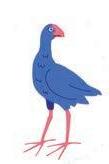
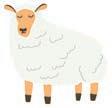


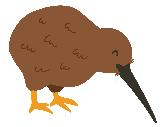

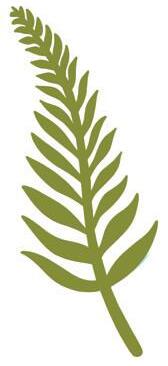
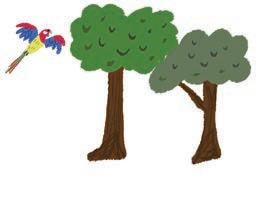
a E in C4
b L in E2
c N in H4
d L in D3
e D in F4
f W in B5
g O in G3
h E in I5
2 Follow the instructions from the park entry to a ride. Write the name of the ride and its grid reference.



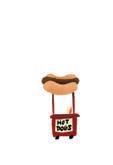





What would happen if you did a 1 2 turn after leaving D1?
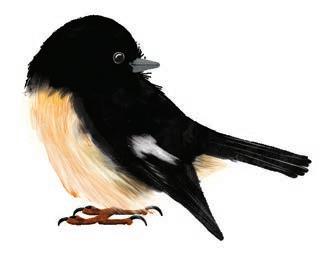
a D1, forward one square, 1 4 turn right, forward 3 squares
b D1, forward three squares, 1 4 turn left, forward 2 squares
a Which 2 roads is the skate park on?
b Which 2 roads is the hospital on?
5 Follow the directions.
a Start at the Bird St bus stop.
b Walk along Bird St to Cat Rd.
c Turn 1 4 left onto Cat Rd.
d Keep walking until you reach Goat St.
Remember to consider where you are on the map when turning left or right.
e Turn 1 4 left and walk to the corner of Dog Rd.
f Where are you now?

6 Write your own directions from the swimming pool to the school.










Unit 8: Topic 1
Collecting data
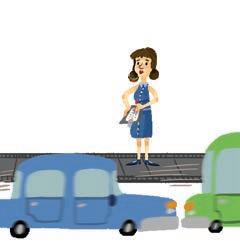
You can collect data from many different sources. observation surveys test results other sources


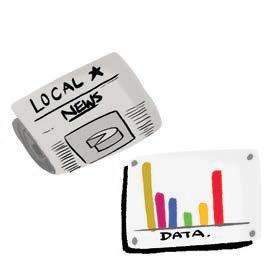
Which source of data might be best for finding out where your class likes to go for holidays?
Guided practice
1 Match the data with the best source.
FINAL

students in your class who know their times tables other sources, such as the Census number of people who walked past the school during lunch test results number of people who live in New Zealand survey
2 What answers might you expect if you asked your classmates about:
a their favourite sport?
b their favourite colour?
c what pets they have? favourite foods in your class observation
Independent practice
1
a Write a survey question to find out about your classmates’ hobbies.
b Choose 10 people to answer your question and record their responses.
Number of people
Responses
2 Circle the best question to ask if you want to find out the number of brothers and sisters your classmates have.
a Do you have any brothers and sisters?
b How many people in your family?
c How many brothers and sisters do you have?
3 Ask 5 people the question you chose and record their answers with ticks. 01234 or more
Number of brothers and sisters
4
The data in this list was collected in a survey. Reorganise the data as a table using tally marks.
Survey question: What is your favourite colour?
List Table
blue, red, blue, green, red, red, green, blue, pink, red, blue, red
Colour Number of responses
5 Survey 12 people in your class about their favourite animal.
a Write the question you will ask them.
b Lis t their responses.
c Show their responses in a table.
Extended practice
1 These shapes have been sorted into 3 groups.
a Explain how they are grouped.
b What source do you think was used to classify the data?
2
a Choose one type of data (such as number of chairs) you could collect in the classroom through observation.
b Write your choice as a survey question.
FINAL
c Collect and record the data in a list or table.
Unit 8: Topic 2 Graphs
The x-axis is also called the horizontal axis, and the y-axis is called the vertical axis.
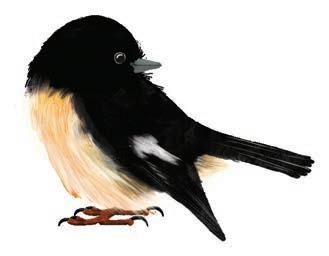
a What is the title of the graph? b What does the x-axis show? c What does the y-axis show?
d What flavours did students pick?
e What is the highest number on the y-axis?
f Which flavour was the favourite of the least number of students?
Independent practice
1 This table shows the favourite day of the week in 4S.
a Use the data to complete the graph.
b Which day is the most popular?
c Which day is the least popular?
d What does the x-axis show?
e What does the y-axis show?
f What was the highest total
a Survey 10 classmates about their favourite meal and record your data as a list or on a program such as Excel.
Using Excel
In row 1, write the meal names. In row 2, write the data.
Hold the Shift key and click on A1 and C2.
Make a chart (graph) by pressing: Alt and F1 (Windows) or Option and F1 (Mac).
b Make a picture graph of the data.
of people
c Which meal was the most popular?
d How many people preferred breakfast?
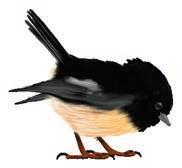
How can you check your data for errors?
3 Make a table with tally marks using the column graph data. Where I
Extended practice
1 Survey 15 classmates to find out the order they were born amongst their siblings.
a Record your results in the table.

Number of students
b Make a picture graph of the results.
c Make a column graph of the results.
d Give both graphs a title and labels.
e Which graph do you find easier to read? Why?
f Discuss your results with a classmate. Were they what you expected? Why or why not?
Unit 8: Topic 3
Interpreting data
• Oleg did the most training on Wednesday.
• He didn’t do any training on Sunday.
• He did 2 hours of training on Monday.
What else does the graph tell you?
Guided practice
1 Use the data to answer the questions. How I feel about school
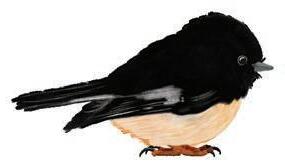
a Which response was most popular?
Number of students
b Least popular?
c Which response did 6 students choose?
d Which 2 responses were chosen by the same number of students?
e How many students were surveyed?
Independent practice
1 Students in 4W were asked the survey question: What is your favourite afternoon snack?
Most popular afternoon snack in 4W
a How many more students chose fruit than popcorn?
b Did more students choose milkshakes or biscuits?
c What might ‘Other’ be?
d Tick the statement that best answers the survey question.
Biscuits are 4W’s favourite afternoon snack. 4W likes a lot of different afternoon snacks.
2 Write 3 more statements about the data in the graph.
3
These graphs show how many goals 5 students scored in a soccer season.



















a List 2 features the column graph has that the picture graph doesn’t.
How do you know which one is the column graph?
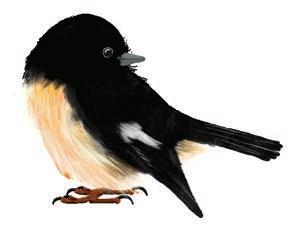
b When might you use the first type of graph?
c When might you use the second type of graph?
d Write 2 facts from the data in the graphs.
e How many more did the highest goal scorer score than the lowest?
f How many goals did the students score altogether in the season?
DavidHayleyKenadee Miller Ming
Extended practice
a Choose a survey topic (such as favourite foods) and write a question to ask your classmates.
Topic: Question:
b Survey 12 students and record their responses.
FINAL
c Make a graph of the results or, with your teacher’s permission, use an online graph creator.
d Write 3 statements about your data.
Unit 9: Topic 1
Chance events
If you have 2 ice cream flavours and 2 toppings, these are the combinations you could make:
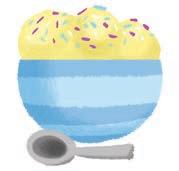
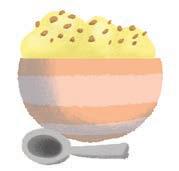
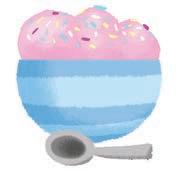
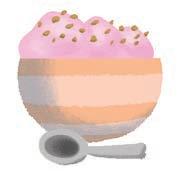
sprinkles strawberry
The possible combinations can also be called outcomes outcomes.
Guided practice
1
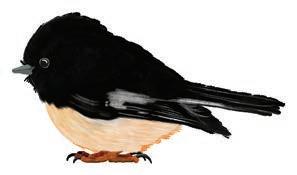
a Predict how many outcomes would be possible with 3 flavours and 2 toppings.
b Draw or write each of the combinations.
FINAL
c How many combinations are there?
vanilla with sprinkles
vanilla with nuts strawberry with
with nuts
Independent practice
a Jawad put a red, a blue, a green and a yellow marble in a box. List the possible outcomes if he draws out 2 marbles at once.




b How many possible outcomes do you think there will be if he adds a purple marble?
c List or draw all the possibilities.
FINAL





d How many are there?
e How likely is it that Jawad draws out a red marble on the first try?
impossible unlikely likely certain
f How likely is it that he draws out a black one?
impossible unlikely likely certain
a List the different possible outcomes for this spinner.
b How likely is it to land on:
i red?
iii pink?
ii green?
iv yellow?
c What is the arrow most likely to land on?
d What is the arrow least likely to land on?
When might you need to know how likely something is?

3 Colour the spinner so that:
a it is most likely to land on green.
b it is least likely to land on blue.
c it is impossible to land on yellow.
d it is possible to land on red.
4 How many outcomes are possible if you toss:
a 1 coin?
b 2 coins?
c 3 coins?
5 Why do you think people use tossing coins to make decisions?
Extended practice
1 Imagine a box containing 1 red and 1 blue counter. If you draw the counters out of the box one-by-one, 2 outcomes are possible: red blue or blue red
a Predict how many combinations are possible if there are 3 colours.
b Draw or list the possible outcomes if a pink counter is added.
FINAL
2 Ben spins two wheels. For each wheel, write the likelihood of each outcome as a fraction.
Unit 9: Topic 2
Chance experiments
After 10 rolls of a dice, Penny recorded the following results.
Outcome 123456
Number of
If Penny rolls again, what do you think the next number will be?
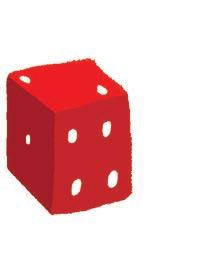
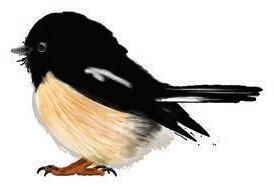
Guided practice
1 Now it’s your turn. (Your teacher may choose an online dice roller.)
a Predict what your results will be if you roll a dice 10 times.
Outcome 123456
Predicted number of times
b Conduct the experiment and record the results.
Outcome 123456
Actual number of times
c Was your prediction correct?
d Why or why not?
Independent practice
1 With your teacher’s permission, you could use an online dice roller.
a Roll a dice 30 times and record the results.
Outcome 123456
Number of times
b If you repeat the experiment, do you think the results will be the same? Why or why not?
c Roll a dice another 30 times.
Outcome 123456
Number of times
d Were the results different? Why or why not?
FINAL
e What would you expect if you did the experiment again?
f How might the results be different if you repeated the experiment with a 10-sided dice?
a What are the 2 possible outcomes if you toss a coin?
b What are the 4 possible outcomes if you toss 2 coins?

c How likely are you to toss 2 heads rather than the other outcomes? less likely equally likely more likely
d Conduct 20 trials and record the results. You could use an online coin tosser.
Number of times
e Which outcome came up most often?
f Which came up least often?
g Do you think your results are the same as other people in your class?
h Compare your results with a classmate. What do they tell you about chance?
Have you ever made a decision by tossing a coin?
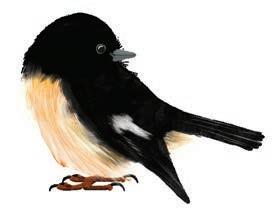
3 Circle the activities in which chance plays a part.
• winning a raffle • getting a perfect score on a spelling test
• catching a cold • going to the movies with your friends
Extended practice
1 Put 5 different coloured counters into a container.
a If you take out 1 counter, what colour do you think it will be? Why?
b Conduct the experiment 25 times, returning the counters to the box each time. Complete the table and record your results.
Outcome
Number of times
c Make a picture graph of the results.
Counter experiment outcomes Number of people
Colour
FINAL
d Write 2 statements about the results.
e Discuss your results with a classmate. Did you get the same results? Why or why not?
Glossary
acute angle An angle that is smaller than a right angle or 90 degrees.
area model A visual way of solving multiplication problems by constructing a rectangle with the same dimensions as the numbers you are multiplying and breaking the problem down by place value.
6 × 10 = 60
addition The joining or adding of two numbers together to find the total. Also known as adding, plus and sum. See also vertical addition
3 and 2 is 5 right angle
algorithm A process or formula used to solve a problem in maths.
Examples: horizontal vertical algorithms algorithms
24 + 13 37 24 + 13 = 37
analog time Time shown on a clock or watch face with numbers and hands to indicate the hours and minutes.
angle The space between two lines or surfaces at the point where they meet, usually measured in degrees.
75-degree angle
anticlockwise Moving in the opposite direction to the hands of a clock.
area The size of an object’s surface.
Example: It takes 12 tiles to cover this poster.
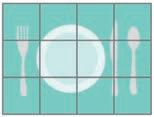
6 × 8 = 48 so 6 × 18 = 108
array An arrangement of items into even columns and rows to make them easier to count.
balance scale Equipment that balances items of equal mass; used to compare the mass of different items. Also called pan balance or equal arm balance
base The bottom edge of a 2D shape or the bottom face of a 3D shape.
capacity The amount that a container can hold. Example: The jug has a capacity of 4 cups.
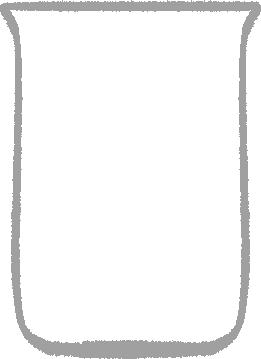

Cartesian plane A grid system with numbered horizontal and vertical axes that allow for exact locations to be described and found.
categorical variables The different groups that objects or data can be sorted into based on common features.
Example: Within the category of ice cream flavours, variables include:



centimetre or cm A unit for measuring the length of smaller items.

Example: Length is 80 cm.
circumference The distance around the outside of a circle.
clockwise Moving in the same direction as the hands of a clock.
column graph A way of representing data using columns or bars to show the values of each variable.
common denominator
Denominators that are the same. To find a common denominator, you need to identify a multiple that two or more denominators share.
Example: 1
compensation method A way of solving a problem that involves rounding a number to make it easier to work with, and then paying back or ‘compensating’ the same amount.
Example: 24 + 99 = 24 + 100 – 1 = 123
composite number A number that has more than two factors, that is, a number that is not a prime number.
cone A 3D shape with a circular base that tapers to a point.
coordinates A combination of numbers or numbers and letters that show location on a grid map.
vanilla chocolate strawberry
corner The point where two edges of a 2D or 3D shape meet. Also known as a vertex. corner
cross-section The surface or shape that results from making a straight cut through a 3D shape.

cube A rectangular prism where all six faces are squares of equal size.
cubic centimetre or cm3 A unit for measuring the volume of smaller objects.
Example: This cube is exactly 1 cm long, 1 cm wide and 1 cm deep.
cylinder A 3D shape with two parallel circular bases and one curved surface.
degrees Celsius A unit used to measure the temperature against the Celsius scale where 0°C is the freezing point and 100°C is the boiling point.
denominator The bottom number in a fraction, which shows how many pieces the whole or group has been divided into.
FINAL
data Information gathered through methods such as questioning, surveys or observation.
decimal fraction A way of writing a number that separates any whole numbers from fractional parts expressed as tenths, hundredths, thousandths and so on. 1 9 10
Example: 1.9 is the same as 1 whole and 9 parts out of 10 or 1 9 10
diameter A straight line from one side of a circle to the other, passing through the centre point.
digital time Time shown on a clock or watch face with numbers only to indicate the hours and minutes.

division/dividing The process of sharing a number or group into equal parts, with or without remainders.
dot plot A way of representing pieces of data using dots along a line labelled with variables.
Favourite pets cat dog rabbit
double/doubles Adding two identical numbers or multiplying a number by 2.
Example: 2 + 2 = 4 4 × 2 = 8 3 4
duration How long something lasts.
Example: Most movies have a duration of about 2 hours.
edge The side of a shape or the line where two faces of a 3D shape meet.
edge
edge
equal Having the same number or value.
face The flat surface of a 3D shape.
factor A whole number that will divide evenly into another number.
Example: The factors of 10 are 1 and 10, 2 and 5.
financial plan A plan that helps you to organise or manage your money.
flip To turn a shape over horizontally or vertically. Also known as reflect. vertical
Example: Equal size Equal numbers
equation A written mathematical problem where both sides are equal.
Example: 4 + 5 = 6 + 3
equilateral triangle A triangle with three sides and angles the same size.
equivalent fractions Different fractions that represent the same size in relation to a whole or group. 1 2 2 4 3 6 4 8
estimate A thinking guess.
even number A number that can be divided equally into 2.
Example: 4 and 8 are even numbers
fraction An equal part of a whole or group.
Example: One out of two parts or 1 2 is shaded.
frequency The number of times a particular outcome occurs in a chance experiment.
function machine A machine that can be programmed to do the same thing to any number that is fed into it.
gram or g A unit for measuring the mass of smaller items. There are 1000 g in 1 kg.
graph A visual way to represent data or information.
GST or Goods and Services Tax A tax, such as 15%, that applies to most goods and services bought in New Zealand.
Example: Amount
$10 + $1.50 = $11.50 hexagon with six sides.
horizontal Parallel with the horizon or going straight across.
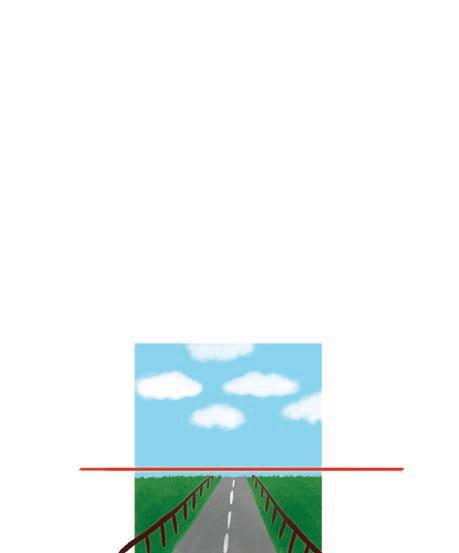
improper fraction A fraction where the numerator is greater than the denominator, such as 3 2
integer A whole number. Integers can be positive or negative.
inverse operations Operations that are the opposite or reverse of each other. Addition and subtraction are inverse operations.
Example: 6 + 7 = 13 can be reversed with 13 – 7 = 6
invoice A written list of goods and services provided, including their cost and any GST.
irregular shape A shape in which the sides are not all the same length and the angles are not all the same size.
isosceles triangle A triangle with two sides and two angles of the same size.
jump method A way to solve number problems that uses place value to “jump” along a number line by hundreds, tens and ones.
Example: 16 + 22 = 38 kilogram or kg A unit for measuring the mass of larger items.

kilometre or km A unit for measuring long distances or lengths.
kite A four-sided shape where two pairs of adjacent sides are the same length.
legend A key that tells you what the symbols on a map mean.



length The longest dimension of a shape or object.



line graph A type of graph that joins plotted data with a line.
litre or L A unit for measuring the capacity of larger containers.
Example: The capacity of this bucket is 8 litres.

mass How heavy an object is.

Example: 4.5 kilograms 4.5 grams method A way to solve a problem. In maths, you can often use more than one method to get the right answer.
Example: 32 + 27 = 59
Jump method
Split method
30 + 2 + 20 + 7 = 30 + 20 + 2 + 7 = 59
metre or m A unit for measuring the length or height of larger objects.

milligram or mg A unit for measuring the mass of lighter items or to use when accuracy of measurements is important.

700 mg
millilitre or mL A unit for measuring the capacity of smaller containers.
1000 mL is 1 litre
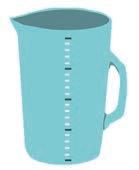
millimetre or mm A unit for measuring the length of very small items or to use when accuracy of measurements is important.
There are 10 mm in 1 cm.
mixed number A number that contains both a whole number and a fraction.
Example: 2 3 4
multiple The result of multiplying a particular whole number by another whole number.
Example: 10, 15, 20 and 100 are all multiples of 5.
near doubles A way to add two nearly identical numbers by using known doubles facts.
Example: 4 + 5 = 4 + 4 + 1 = 9
net A flat shape that when folded up makes a 3D shape.
odd number A number that cannot be divided equally into 2.
Example: 5 and 9 are odd numbers.
operation A mathematical process. The four basic operations are addition, subtraction, multiplication and division.
number line A line on which numbers can be placed to show their order in our number system or to help with calculations.
origin The point on a Cartesian plane where the x -axis and y -axis intersect.
origin
number sentence A way to record calculations using numbers and mathematical symbols.
Example: 23 + 7 = 30
numeral A figure or symbol used to represent a number.
Examples: 1 – one 2 – two 3 – three
numerator The top number in a fraction, which shows how many pieces you are dealing with.
obtuse angle An angle that is larger than a right angle or 90 degrees, but smaller than 180 degrees.
outcome The result of a chance experiment.
Example: The possible outcomes if you roll a dice are 1, 2, 3, 4, 5 or 6.
parallel lines Straight lines that are the same distance apart and so will never cross.
parallelparallelnot parallel
parallelogram A four-sided shape where each pair of opposite sides is parallel.
octagon A 2D shape with eight sides.
pattern A repeating design or sequence of numbers.
Example: Shape pattern
Number pattern 2, 3, 6, 8, 10, 12
pentagon A 2D shape with five sides.
per cent or % A fraction out of 100.
Example: 62 100 or 62 out of 100 is also 62%.
perimeter The distance around the outside of a shape or area.
Example: Perimeter = 7 m + 5 m + 10 m + 3 m + 6 m = 31 m
picture graph A way of representing data using pictures so that it is easy to understand.
Example: Favourite juices in our class





















place value The value of a digit depending on its place in a number.
27 4 8
27 4 86
27 4 863
27 4 8631
polygon A closed 2D shape with three or more straight sides. polygons not polygons
polyhedron (plural: polyhedra)
A 3D shape with flat faces.Not polyhedra polyhedra
polyhedra not polyhedra
power of The number of times a particular number is multiplied by itself. Example: 4 3 is 4 to the power of 3 or 4 × 4 × 4.
prime number A number that has just two factors – 1 and itself. The first four prime numbers are 2, 3, 5 and 7.
prism A 3D shape with parallel bases of the same shape and rectangular side faces. triangular prism rectangular prism hexagonal prism
triangular prism rectangular prism hexagonal prism
probability The chance or likelihood of a particular event or outcome occurring. Example: There is a 1 in 8 chance this spinner will land on red.
protractor An instrument used to measure the size of angles in degrees.
pyramid A 3D shape with a 2D shape as a base and triangular faces meeting at a point.
remainder An amount left over after dividing one number by another.
Example: 11 ÷ 5 = 2 r1
square pyramid hexagonal pyramid
square pyramid hexagonal pyramid
quadrant A quarter of a circle or one of the four quarters on a Cartesian plane.
quadrant quadrant
quadrilateral Any 2D shape with four sides.
radius The distance from the centre of a circle to its circumference or edge.
reflect To turn a shape over horizontally or vertically. Also known as flipping vertical reflection horizontal reflection
reflex angle An angle that is between 180 and 360 degrees in size.
regular shape A shape in which all the sides are the same length and all the angles are the same size.
rhombus A 2D shape with four sides, all of the same length and opposite sides parallel.
right angle An angle of exactly 90 degrees. 90º
90º
right-angled triangle A triangle where one angle is exactly 90 degrees. rotate Turn around a point.
rotational symmetry A shape has rotational symmetry if it fits into its own outline at least once while being turned around a fixed centre point.
round/rounding To change a number to another number that is close to it to make it easier to work with.
229 can be:
rounded up to the nearest 10. 230 OR
rounded down to the nearest 100. 200
scale A way to represent large areas on maps by using ratios of smaller to larger measurements.
Example: 1 cm = 5 m
scalene triangle A triangle where no sides are the same length and no angles are equal.
sector A section of a circle bounded by two radius lines and an arc.
skip counting Counting on or back by the same number each time.
Examples:
Skip counting by fives: 5, 10, 15, 20, 25, 30
Skip counting by twos: 1, 3, 5, 7, 9, 11, 13
slide To move a shape to a new position without flipping or turning it. Also known as translate.
FINAL
semi-circle Half a circle, bounded by an arc and a diameter line.
sphere A 3D shape that is perfectly round.
split method A way to solve number problems that involves splitting numbers up using place value to make them easier to work with.
Example: 21 + 14 = 20 + 10 + 1 + 4 = 35
square centimetre or cm2 A unit for measuring the area of smaller objects. It is exactly 1 cm long and 1 cm wide.
square metre or m2 A unit for measuring the area of larger spaces. It is exactly 1 m long and 1 m wide.
square number The result of a number being multiplied by itself. The product can be represented as a square array.
Example: 3 × 3 or 32 = 9
straight angle An angle that is exactly 180 degrees in size.
subtraction The taking away of one number from another number. Also known as subtracting, take away, difference between and minus. See also vertical subtraction.
Example: 5 take away 2 is 3
survey A way of collecting data or information by asking questions.
Strongly agree Agree Disagree Strongly disagree
symmetry A shape or pattern has symmetry when one side is a mirror image of the other.
table A way to organise information that uses columns and rows.
tally marks A way of keeping count that uses single lines with every fifth line crossed to make a group.
term A number in a series or pattern. Example: The sixth term in this pattern is 18.
369 12 15 18 21 24
tessellation A pattern formed by shapes that fit together without any gaps.

thermometer An instrument for measuring temperature.
three-dimensional or 3D
A shape that has three dimensions –length, width and depth. 3D shapes are not flat.
timeline A visual representation of a period of time with significant events marked in.
translate To move a shape to a new position without flipping or turning it. Also known as slide
trapezium A 2D shape with four sides and only one set of parallel lines.
triangular number A number that can be organised into a triangular shape. The first four are:
1 3 6 10
two-dimensional or 2D A flat shape that has two dimensions –length and width.
turn Rotate around a point.
unequal Not having the same size or value.
Example: Unequal Unequal size numbers
Unequal sizeUnequal numbers value How much something is worth.
Example: This coin is This coin is worth 10c. worth $1.
vertex (plural: vertices) The point where two edges of a 2D or 3D shape meet. Also known as a corner.
vertical At a right angle to the horizon or straight up and down.
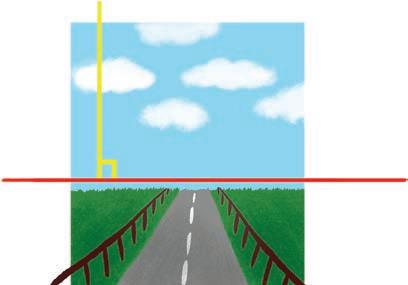
vertical addition A way of recording addition so that the place value columns are lined up vertically to make calculation easier.
vertical subtraction A way of recording subtraction so that the place value columns are lined up vertically to make calculation easier.
volume How much space an object takes up.
Example: This shape has a
whole All of an item or group.
Example: A whole shape A whole group
A whole shapeA whole group width The shortest dimension of a shape or object. Also known as breadth.

x-axis The horizontal reference line showing coordinates or values on a graph or map.
y -axis The vertical reference line showing coordinates or values on a graph or map.
Unit 1: Topic 1
1 a four thousand, five hundred and sixty-eight
b eight thousand and forty-three
c seventeen thousand, one hundred and nine
Unit 1: Topic 2
Guided practice
1 a 7 and 17 b 8 and 18
c 10 and 20 d 5 and 25
Independent practice
1 a 9 and 29 b 8 and 18
c 6 and 26 d 9 and 3 9
e 10 and 40
2 a 6 0 b 8, 8 0
c 10, 100 d 4, 20, 20
e If 8 + 8 = 16, then 8 0 + 80 = 160.
f If 1 + 1 = 2, then 100 + 100 = 200.
g If 6 + 6 = 12, then 6 00 + 600 = 1200.
h If 7 + 7 = 14, then 700 + 700 = 1400.
3 a 23 + 12 = 30 + 5 = 35
b 50 + 7 = 57 c 80 + 7 = 87
d 80 + 9 = 8 9 e 60 + 10 = 70
4 a 6 + 4 + 7 = 17
b 25 + 5 + 4 = 3 4
c 17 + 3 + 2 + 4 = 26
d 11 + 19 + 3 + 2 = 35
5 a 18 0 b 9 8 c 41
d 4 0 e 8 9 f 1000
g 78 h 50
7
Extended practice
1 a 12 + 8 + 7 = 27
b 23 + 7 + 12 = 42
c 221 + 39 + 8 = 268
Unit 1: Topic 3
1
2 a 14 b 5 9 c 141 d 124 Teacher: Look for students who can articulate how they arrived at the answer and what mental strategies they used.
Unit 1: Topic 5
Extended practice
1 a 802 b 9 23
681781881 891901 911
2 a 1790 b 3 521 c 759 3
3 872 Teacher to check methods. Look for students who choose an appropriate method, and can follow the steps sequentially to find the correct answer.
Unit 1: Topic 4
Guided practice
1 a 3, 13 b 7, 17 c 2, 12 d 4, 24
Independent practice
1 a 2, 12 b 1, 21 c 5, 15
d 6, 26 e 3, 3 3 f 2, 8 2
g 3, 9 3
2 a 35 – 13 = 35 – 10 – 3 = 22
b 48 – 15 = 48 – 10 – 5 = 33
c 52 – 21 = 52 – 20 – 1 = 31
d 67 – 3 4 = 67 – 30 – 4 = 33
e 96 – 25 = 96 – 20 – 5 = 71
f 124 – 13 = 124 – 10 – 3 = 111
g 38 9 – 57 = 389 – 50 – 7 = 332 375 475 575675775 785 795796797
Unit 1: Topic 6
Independent practice
1 a 6 + 4 = 10, 4 + 6 = 10, 10 – 6 = 4, 10 – 4 = 6
b 17 + 7 = 24, 7 + 17 = 24, 24 – 7 = 17, 24 – 17 = 7
c 17 + 12 = 29, 12 + 17 = 29, 29 – 17 = 12, 29 – 12 = 17
d 40 + 8 = 4 8, 8 + 40 = 48, 48 – 8 = 40, 48 – 40 = 8
e 45 + 37 = 82, 37 + 45 = 82, 82 – 37 = 45, 82 – 45 = 37
f 10 0 + 26 = 126, 26 + 100 = 126, 126 – 26 = 100, 126 – 100 = 26
2 a 14 + 17 = 31, 17 + 14 = 31, 31 – 14 = 17, 31 – 17 = 14
b 32 + 4 6 = 78, 46 + 32 = 78, 78 – 32 = 46, 78 – 46 = 32
c 15 + 3 3 = 48, 33 + 15 = 48, 48 – 15 = 33, 48 – 33 = 15
d 16 + 3 9 = 55, 39 + 16 = 55, 55 – 16 = 39, 55 – 39 = 16
e 97 + 70 = 167, 70 + 97 = 167, 167 – 97 = 70, 167 – 70 = 97
f 14 3 + 135 = 278, 135 + 143 = 278, 278 – 143 = 135, 278 – 135 = 143
Extended practice
1 a 34 + 28 is the same as 3 4 + 30 – 2 = 62
b 26 + 29 is the same as 26 + 30 – 1 = 55
c 53 + 4 9 is the same as 53 + 50 – 1 = 102
2 a–d Teacher to check answers. Students could share their responses, justifying them where appropriate.
Unit 1: Topic 7
Guided practice
c 8 × 5 = 40, 5 × 8 = 40, 40 ÷ 5 = 8 , 40 ÷ 8 = 5
d 7 × 10 = 70, 10 × 7 = 70, 70 ÷ 10 = 7, 70 ÷ 7 = 10
3 There are 10 jelly beans. There are 2 people.
10 ÷ 2 = 5
Yes, they can.
4 There are 12 marbles. There are 3 people.
12 ÷ 3 = 4
No, they can’t.
5 There are 16 marbles. There are 4 people.
16 ÷ 4 = 4
Yes, they can.
Extended practice
1 a 15 b 3 0 c 3 5 d 50
2 c sometimes odd and sometimes even.
3 a
4 a 125 g, 35 g, 1 egg, 120 g
b 50 0 g, 140 g, 4 eggs, 480 g
Extended practice
1 a 64 b 21 c 6 0 d 20
Unit 1: Topic 9
Guided practice
1 a 2 × 20 + 2 × 6 = 4 0 + 12 = 52
b 4 × 10 + 4 × 4 = 4 0 + 16 = 56
c 3 × 10 + 3 × 9 = 3 0 + 27 = 57
Independent practice
1 a 5 × 13 = 5 × 10 + 5 × 3 = 50 + 15 = 65
FINAL
1 a 15 shared between 3 is 5.
b 12 shared between 2 is 6.
c 28 shared between 4 is 7.
2 a 3 groups of 3 = 9
b 4 groups of 4 = 16
c 3 groups of 6 = 18
Independent practice
1 a 3 × 4 = 12, 4 × 3 = 12
b 5 × 10 = 5 0, 10 × 5 = 50
2 Note: Answers can be in any order.
a 3 × 9 = 27, 9 × 3 = 27, 27 ÷ 3 = 9, 27 ÷ 9 = 3
b 10 × 2 = 20, 2 × 10 = 20, 20 ÷ 2 = 10, 20 ÷ 10 = 2
8
10
b Andy c Serena
e $100 f 7
Unit 1: Topic 8
Guided practice
1 a 3, 6, 9, 12, 15, 18
b 2, 4, 6, 8, 10, 12, 14, 16
c 10, 20, 30
d 5, 10, 15, 20, 25, 30, 35
e 3, 6 , 9, 12, 15, 18, 21, 24
Independent practice
1 a 8 x 4 = 8 x 2 = 16 x 2 = 32
b 20 x 4 = 20 x 2 = 40 x 2 = 80
c 12 x 4 = 12 x 2 = 24 x 2 = 48
d 30 x 4 = 3 0 x 2 = 60 x 2 = 120
2 a 16 ÷ 2 = 8 , 8 ÷ 2 = 4, so 16 ÷ 4 = 4
b 40 ÷ 2 = 20, 20 ÷ 2 = 10, so 40 ÷ 4 = 10
c 60 ÷ 2 = 3 0, 30 ÷ 2 = 15, so 60 ÷ 4 = 15
3 a 2 × 13 = 26, so 26 ÷ 2 = 13
b 3 × 9 = 27, so 27 ÷ 3 = 9
c 5 × 9 = 45, so 45 ÷ 5 = 9
d 5 × 11 = 5 5, so 55 ÷ 5 = 11
e 10 × 12 = 120, so 120 ÷ 10 = 12
b 6 × 21 = 6 × 20 + 6 × 1 = 120 + 6 = 126
c 4 × 32 = 4 × 3 0 + 4 × 2 = 120 + 8 = 128
d 7 × 24 = 7 × 20 + 7 × 4 = 140 + 28 = 168
e 5 × 45 = 5 × 4 0 + 5 × 5 = 200 + 25 = 225
f 8 × 33 = 8 × 3 0 + 8 × 3 = 240 + 24 = 264
g 3 × 58 = 3 × 5 0 + 3 × 8 = 150 + 24 = 174
2 a 10 8 × 20 7 4 80 28
b 216 × 30 6 6 180 36 c 265 × 50 3 5 250 15 d 186 × 60 2 3 180 6
e 420 × 80 4 5 400 20 f 192 × 40 8 4 160 32
g 190 × 90 5 2 180 10
Extended
practice
1 Teacher: Look for students who are able to successfully interpret the problems and choose an appropriate method to solve each problem. Students also need to be able to accurately apply the method to find the correct answer.
a 14 8
b 96
c $ 4.50
d 4 × 26 = 104 – 3 = 101
Unit 2: Topic 1
Guided practice
1 The following fractions should be circled:
a 2 8 b 4 6 c 3 4
Independent practice
1 a 1 3 and 2 6 b 2 5 and 4 10
c 1 2 and 2 4 d 2 3 and 6 9
2 a 5 sections should be coloured to show 5 10
b 2 sections should be coloured to show 2 3
c 4 sections should be coloured to show 4 5
d 1 section should be coloured to show 1 4
3 a 2 boxes should be shaded, 0.2
b 6 boxes should be shaded, 0.6
c 9 boxes should be shaded, 0.9
d 4 boxes should be shaded, 0.4
4 0.3, 0.7, 0.9
1 10 , 4 10 , 8 10
Extended practice
1 a 0.9 b 0.4 c 0.7 d 0.3
e 0.5 f 0.2
2 If you divide 10 by 10, you won’t get a decimal you will get 1.
3 Students should circle:
1 4 = 2 8 , 1 6 = 2 12 , 3
Unit 2: Topic 2
Extended practice
Unit 2: Topic 3
Guided practice
1 a The muffins should be circled in 2 groups of 2.
b The apples should be circled in 2 groups of 4.
1 2 of 8 = 4
8 ÷ 2 = 4
c The dots should be circled in 2 groups of 3.
1 2 of 6 = 3 6 ÷ 2 = 3
d The dots should be circled in 2 groups of 6.
1 2 of 12 = 6 12 ÷ 2 = 6
Independent practice
1 a 1 2 of 20 = 10
20 ÷ 2 = 10
b 1 3 of 18 = 6
18 ÷ 3 = 6
c 1 4 of 20 = 5
20 ÷ 4 = 5
d 1 5 of 30 = 6
30 ÷ 5 = 6
e 1 6 of 36 = 6
36 ÷ 6 = 6 2
Fraction Division Number of beads
1 4 are red 1 4 of 20 20 ÷ 4 = 5 5 red 1 4 are yellow 1 4 of 20 20 ÷ 4 = 5 5 yellow
1 5 are blue 1 5 of 20 20 ÷ 5 = 44 blue
1 10 are green 1 10 of 20 20 ÷ 10 = 2 2 green
3 4 purple beads or 1 5 of 20
4 a 2 b 3 c 6 d 2 e 4 f 6 g 8 h 6 i 9
j 6 k 9 l 10
Extended practice
1 1 6 of 30, 30 ÷ 6
1 10 of 50, 50 ÷ 10
1 8 of 80, 80 ÷ 8
1 6 of 36, 36 ÷ 6
2 a 1 6 of 30 = 5 b 1 10 of 50 = 5
c 1 8 of 80 = 10 d 1 6 of 36 = 6
3 3
4 $125
5 13
Unit 2: Topic 4
Guided practice 1
Unit 3: Topic 1
Guided practice
1 Teacher to check. Look for students who demonstrate an understanding of the value of coins and who show fluency in their addition skills.
Some possible combinations include:
a 50 c and 20c, three 20c and one 10c, or one 50c and two 10c coins
b one $1 coin, two 50c coins or five 20c coins
c two 20c coins, four 10c coins, or one 20c coin and two 10c coins
Independent practice
1 Teacher to check. Look for students who demonstrate fluency with coins and calculations by making the given total using only three coins. Likely answers are:
a three 10c coins
b one 5 0c and two 20c coins
c one $1 coin and two 10c coins or two 50c coins and one 20c coin
d two $1 coins and one 10c coin
2 Students may choose to draw or write answers.
a one $1 coin and one 20c coin
b one 5 0c coin and one 10c coin
c two $2, one $1 and one 10c coin
d one $1, one 50c and two 20c coins
e one $ 2 and one 50c coin
f one 5 0c, one 20c and one 10c coin
3 Students may choose to draw or write answers.
Unit 4: Topic 1
Extended practice
1
2 b $12 + $4, $16
c $20 + $3, $23
3 a cost: $14.80, change: $5.20
b cost: $16.10, change: $3.90
c cost: $23, change: $7
4 Yes, you would receive 10c change because the cost of $19.94 would be rounded down to $19.90.
4 a b Subtract 3
18 15 12 963
5 a & b Teacher to check. Look for students who can create correct addition and subtraction patterns, and whose rules match their patterns.
Extended practice
1 a Add 5, subtract 1 b Subtract 2, add 3
2 a 1256 9 10 13 14 17 18
b 56 54 51 49 46 44 41 39 36 34
3 Teacher to check. Look for students who can identify the two steps in their pattern and correctly use their rule to complete the numbers in the pattern.
Unit 4: Topic 2
Guided practice
1 a 18 = 18 b 50 = 5 0
c 10 = 10 d 16 = 16
2 Yes, all of the equations in question 1 were balanced because each half of the number sentences were equal.
Independent practice
1 a 15 b 6 c 75 d 10
e 12 f 5
2 a + b + c d + e f g h +
3 a × b ÷ c × d ×
e ÷ f ÷ g ÷ h ×
4 a True b False
c False d True
e True f False
5 a 10 0 ÷ 25 = 4
b 20 0 − 153 = 47
c 12 × 4 = 4 8
d 42 + 14 + 28 = 84
Extended practice
1 a 15 b 4 c 8 4
d 5 4 e 6 f 4
g 5 h 5 5 i 4 0
j 13 k 3 6 l 65
2
a 14 + 44 = 60 − 2
T he number is 44.
b 10 0 − 45 = 23 + 32
The number is 45.
c 78 + 9 0 = 200 − 32
The number is 90.
d 35 + 5 4 = 89 people
89 − 40 = 49
49 people had to stand.
Unit 5: Topic 1
Guided practice
1 a 5 cm b 15 cm c 3 cm d 10 cm
2 a 12 cm b 9 cm
Independent practice
1 Teacher to check. Look for students who have used their personal measures accurately.
2 a & b Teacher to check. Look for students who can make reasonable estimates in both cm and m and who can accurately measure their chosen items.
3 Teacher: The most likely answers are shown here.
a m b cm c m d m
Guided practice
1 a 4 cm2 b 12 cm2 c 8 cm2 d 8 cm2 e 2 cm2 f 6 cm2
2 a b b e
3 c and d
Independent practice
1 a–d Teacher to check. Look for students who can accurately make the shapes based on the specifications and who show an awareness of the basic concept of area – e.g. the squares that make up each shape must have at least one joining edge.
2 47 cm2
3 a Teacher to check. b 36 cm2 c 6 cm2 d 42 cm2
Extended practice
1 Teacher: Given that millimetres are a very small unit of measurement, answers 1 or 2 mm either side of those given here are acceptable.
a 45 mm b 31 mm c 6 mm d 10 mm e 22 mm f 17 mm
2 a 6 m2 b 15 m2 c 2 m2 d 9 m2
3 4 m2
Unit 5: Topic 2
Guided practice
1 a 4 cubic centimetres or 4 cm3
b 5 cubic centimetres or 5 cm3
c 11 cubic centimetres or 11 cm3
d 9 cubic centimetres or 9 cm3
e 12 cubic centimetres or 12 cm3
f 6 cubic centimetres or 6 cm3
Independent practice
1 a 2 b 6 c 12 cm3
2 a 3 b 4 c 12 cm3
3 a 3 b 8 c 24 cm3
4 a The shape from question 3.
b The shapes from questions 1 and 2.
c 12 cm3
Guided practice
1 a B G b A D E
c C F d D e B
Independent practice
1 a A and E
b C and E, C and G, D and E or E and G
c 68 0 mL
d 1100 mL or 1 L and 100 mL
2 a –c Teacher to check. Look for students who can make sound estimates of capacity in relation to a litre, and who are then able to accurately measure to check whether each container holds more or less than 1 litre.
Extended practice
1 & 2 Teacher to check. Look for students who demonstrate an understanding of the concept of volume by drawing an object that meets the given criterion. Drawing the objects may be challenging, and this may be a useful discussion point with the class.
3 a & b Teacher to check. Look for students who show an understanding of millilitres as a unit of capacity by making close estimates for their containers. Students should also be able
to use instruments such as measuring jugs to check the exact measurement.
c & d Te acher: Answers will vary depending on students responses to a & b. Look for students who demonstrate an understanding of capacity by correctly identifying items with the largest and smallest capacities.
Unit 5: Topic 3
Guided practice
1 a C E A B F D
b E A B C F D
2 a the elephant b the 20 c coin
Independent practice
1 a & b Teacher to check. Look for students who can make reasonable estimates about the mass of items relative to 1 kg, and who can use the language of mass to justify their reasoning.
c Teacher: Responses will depend on items chosen by students. Look for students who can use a pan balance to check the mass of their objects.
d Teacher to check. Look for students who are able to make reasonable estimates of objects that might have a mass of 1 kg and who can correctly use a pan balance with a 1 kg weight to check their estimates.
2 a & b Teacher to check. Look for students who can make reasonable estimates of items with a mass of less than 500 g, and who can use a pan balance to find the mass of their items.
Extended practice
1 a 2 kg b 4 kg c 20 0 g
d 50 0 g
2 a 25 0 g b 2 kg c 20 g d 125 g
3 a 2 kg b 30 0 g
c 1 1 2 kilograms or 1 kg and 500 g
d 3 1 2 kilograms or 3 kg and 500 g
Unit 5: Topic 4
Guided practice
1 a 10 past 8, 8:10
b 20 to 5, 4:40
c half (or 30) past 1, 1:30
d 9 to 10, 9:51
e 20 to 7, 6:40
f 20 past 11, 11:20
Independent practice 1
4 B C A D
FINAL
2 c & d Teacher to check. Look for students who make reasonable estimates of objects that might have a mass of 500 g and who are able to accurately check their estimates using a pan balance.
3 a– c Teacher: Responses will vary depending on the objects chosen by students. Look for students who demonstrate an understanding of the concept of balance in mass and who can use their initial estimate to refine their judgement of the number of items likely to balance the subsequent weights.
4 F C B A E D
NOTE: Answers for 4 C and A may vary depending on the student.
5 second, minute, hour, day
6 a counting to 10
b eating one pizza
c growing long hair
7 Teacher to check.
Extended practice
1 a 5 minutes
b 35 minutes
c 1 hour
d 45 minutes
2 a 11 hours and 55 minutes
b 1 hour and 10 minutes
c 11 hours and 50 minutes
3 30 minutes
2 hours, 45 minutes
2 hours
Teacher to check.
Unit 6: Topic 1
Guided practice
Independent practice
1 Teacher: In many cases, there are multiple answers for the name of a shape – e.g. a square could also be known as a rectangle or a quadrilateral. The most likely responses are given below; however, accept any correct response.
a hexagon Parallel lines: Yes
Regular: Yes No. of sides: 6
b square Parallel lines: Yes
Regular: Yes No. of sides: 4
c pentagon Parallel lines: No
Regular: No No. of sides: 5
d hexagon Parallel lines: Yes
Regular: No No. of sides: 6
e triangle Parallel lines: No
Regular: Yes No. of sides: 3
2 Teacher: As with question 1, students’ descriptions may vary.
a pentagon, 5 sides, all sides equal, no parallel sides
b trapezium, 4 sides, type of quadrilateral, 1 pair of parallel sides
c triangle, 1 right angle, no sides equal, no parallel sides
d octagon, 8 sides, irregular, 8 corners
e octagon, 8 sides, irregular, 1 pair of parallel sides
Extended practice
1 Teacher: Several different ways of dividing the shapes are possible. The most likely are given below. Students’ descriptions of the shapes will vary. Look for students who show a sophisticated understanding of shape and who can use a variety of criteria to describe the shapes in a way that makes them easily recognisable.
a 2 trapeziums b square, triangle
3 Teacher: Answers will vary depending on the shape made. Look for students who can accurately name and describe the new shape they made using a range of criteria.
Unit 6: Topic 2





Extended practice
c 2 rectangles d triangle, trapezium

1
c Teacher to check. Look for students who can make a reasonable attempt at drawing a 3D shape, and who recognise that the faces of a square prism are all square and the same size.
2 a Teacher to check. Look for students who demonstrate an understanding of what a prism is, and who can identify the shapes that make up their 3D shape.
b Teacher to check. Look for students who can use the features of their prism to accurately name it.
c Teacher to check. Look for students who show a solid understanding of the features of 3D shapes and can write an accurate description that matches their sketch.
Unit 6: Topic 3
Guided practice
1 a Smaller b Smaller
c Larger d Smaller
e Larger f Equal
Independent practice
1 Teacher to check. Look for students who show an understanding of right angles by finding and accurately representing items in the classroom that include them.
2 The following shapes should be circled: a, e, f
3 a Equal b Smaller c Larger
4 a 3 o’clock, 9 o’clock b B c F
5 a 360 degrees b 180 degrees
c 360 degrees d 180 degrees
e 90 degrees f 90 degrees
Extended practice
2 a & b Teacher to check. Look for students who can combine the shapes into a new polygon.
3 a–d Teacher to check. Look for students who can identify mathematical similarities or differences, such as the shape of faces or the number of edges, rather than other cosmetic differences such as colour.
1 Teacher to check. Look for students who can apply their knowledge of angle sizes to successfully select and classify angles within the classroom.
Unit 6: Topic 4
Guided practice
1 a Symmetrical
b Symmetrical
c Not symmetrical
d Not symmetrical
e Not symmetrical
f Symmetrical
Independent practice
1 In some cases, more than one answer is possible. The most likely responses are shown here.
6 a 4
b & c Teacher to check. Look for the ability to apply understanding of symmetry to create a pattern with two identifiable lines of symmetry.
Extended practice
1 Teacher to check. Look for students who can apply their knowledge of symmetry to make a simple picture that has either horizontal or vertical line symmetry.
2 Teacher to check. Look for students who can demonstrate an understanding of line symmetry as two halves that are a reflection of each other.
FINAL
f 2 Teacher: Some of the shapes have more than two lines of symmetry. The most likely responses are shown, but accept any correct responses.
f 3 a Triangle or Shape c.
b Square and cross or Shapes a and f. 4 N, O and X should be circled.
Unit 6: Topic 5
Guided practice
1 a Slide b Slide c Flip d Turn
2 a & b Teacher to check. Look for students who can apply their understanding of slides and turns to create their own pattern and accurately identify the rule.
3 a flip b slide c turn
4 Teacher to check. Look for students who show awareness of translations in their environment and who can accurately represent and label their patterns.
Extended practice
1 Students may not identify all the translations present in each design.
a Pattern contains turns and flips.
b Pattern contains slides, turns and flips.
c Pattern contains slides and turns.
d Pattern contains slides, turns and flips.
2 Teacher to check. Look for students who are able to demonstrate an understanding of translations and who can apply it to making their own designs.
Unit 7: Topic 1
Guided practice
1 a a kiwi
b a morepork
c a bird or rosella
d a sheep
e a seal
f a fern
2 a Ferris wheel b Roller coaster
3 D1, forward 3 squares, 1 4 turn right, forward 3 squares
4 a Giraffe Road and Tiger Street b Cat Road and Bird street
2 Teacher to check. Look for students who demonstrate an understanding of the language of direction by formulating accurate directions based on their map.
3 a B5, C1 or E4
Unit 8: Topic 1
Guided practice
Extended practice
1 a Teacher to check. Look for students who identify that the categorical variable is the number of sides of the shapes.
b observation
2 a Teacher to check. Look for students who recognise data that can be easily categorised through observation – e.g. the number of people in the class who wear glasses.
b Teacher to check.
c Teacher to check. Look for students who can categorise their data appropriately and record their data observations accurately in tabular or list form.
FINAL
5 Responses may vary – e.g. outside the shopping centre, on the corner of Dog Road and Goat Street, opposite the swimming pool.
6 Teacher to check. Look for students who can use the language of direction to accurately navigate between the given points.
Extended practice
1 Teacher to check. Look for students who can apply their knowledge of representing places on maps, incorporating features such as paths, buildings and trees, to make a map that is reasonably accurate.
2 a –c Answers will vary. Independent practice
1 a Answers will vary. Accept any question that results in responses that can be categorised – e.g. ‘What is your favourite hobby?’ or ‘Do you have any hobbies?’
b Teacher to check. Look for students who successfully identify the categories for their data and who can accurately record their classmates’ responses.
2 Question c should be circled.
3 Teacher to check. Look for students who can accurately record 5 responses in the table.
Unit 8: Topic 2
Guided practice
1 a Favourite ice block flavours in 4P b Flavours
c Number of students
d Lemon, berry, cola and lime e 8 f Lemon
Independent practice
1 a
5 a Teacher to check. Look for students who can frame an appropriate survey question to elicit a response that can be categorised – e.g. ‘What is your favourite animal?’ rather than ‘What is your favourite animal like?’
b Teacher to check. Look for students who can list the answers accurately and who have exactly 12 responses listed.
c Teacher to check. Look for students who can identify appropriate categories for their data and who can accurately transfer the data from their list into the table.
b S aturday c Monday
d Days of the week
e Number of students f 11
2 a & b Teacher to check. Teachers may choose to model the Excel task before the students collect their data. Look for students who can collect and record data accurately in list form, and then translate that data to a picture graph.
c & d Teacher to check. Look for students who can draw simple conclusions from their data.
3
Extended practice
1 a–c Teacher to check. Look for students who demonstrate an understanding of the data gathering process in the form of tables, picture graphs and column graphs by accurately depicting the same data on each.
d Teacher to check. Students are likely to use a title such as ‘Position in family in 3N’. Accept any titles that accurately reflect the data. The y -axis and picture graph label should indicate number of students, while the x -axis label should show position in family, or similar.
e Teacher to check. Look for students who can use the language of statistics to justify their choice – e.g. the numbers on the y -axis of a column graph make it easier to work out how many people are in each category, or the data in a picture graph gives you a quick visual of the results.
f Teacher to make sure students have the opportunity to discuss their results.
Unit 8: Topic 3
Guided practice
1 a Interesting b Fun c Hard d Boring, Challenging e 26
Independent practice
1 a 7 b Biscuits
c Teacher to check. Look for students who can suggest plausible alternatives for the category – e.g. cake or carrot sticks.
visual snapshot of data, but that it is harder to use if numbers are required, as you have to count each item.
c Teacher to check. Look for students who understand that column graphs are helpful when you want to know exact numbers, especially when larger numbers are involved, as you can use the scale to quickly find the numbers for each category.
d Teacher to check. Look for students who demonstrate that they can accurately interpret data and use it to draw conclusions.
e 8 f 19
Extended
practice
1 a Teacher to check. Look for students who can choose a topic that is appropriate for their age group, and who can formulate an appropriate question for their research.
b Teacher to check. Look for students who can use appropriate methods such as lists or tables with tally marks to accurately track the responses to their surveys.
c Teacher to check. Look for students who can construct a column or picture graph that accurately reflects the data that they gathered.
d Teacher to check. Look for students who can use their data to draw conclusions. More sophisticated responses may involve aggregating or comparing variables within their data.
Unit 9: Topic 1
Independent practice
1 a red and blue, red and green, red and yellow, blue and green, blue and yellow, green and yellow
b Teacher to check. Look for students who recognise that the addition of another colour will result in more possible outcomes.
c red and blue, red and green, red and yellow, red and purple, blue and green, blue and yellow, blue and purple, green and yellow, green and purple, yellow and purple
d 10
e unlikely
FINAL
d Biscuits are 4W’s favourite afternoon snack.
2 Teacher to check. Look for students who can make more sophisticated observations by comparing different parts of the data, such as the result in one category against the other, or aggregative data, such as recognising how many students were surveyed or the total of the two most favoured responses.
3 a Teacher to check. The most likely responses are labels and numbers/scale, however accept any reasonable observation.
b Teacher to check. Look for students who understand that a picture graph gives a quick
Guided practice
1 a Teacher to check. Look for students who make a reasonable estimate that is more than the result with only two flavour options, and who can justify their estimate using mathematical reasoning.
b Teacher: Accept any specific flavours or toppings students choose, as long as they fit into the categories below.
flavour 1 with topping 1, flavour 2 with topping 1, flavour 3 with topping 1, flavour 1 with topping 2, flavour 2 with topping 2, flavour 3 with topping 2
c 6
f impossible
2 a red, yellow, green, blue
b i –iv Teacher to check. Look for students who recognise that red is the most likely and blue and green the least likely colours, and who choose appropriate chance words to reflect this.
c red
d blue and green
3 a –d Teacher to check. Look for students who have more green segments than any other colour, fewer blue segments than other colours, no yellow segments, and more red segments than blue. It is acceptable for students to use other colours as long as the criteria are met.
4 a 2 b 4 c 8
5 Teacher to check. Look for students who show an understanding that there is an equally likely chance of tossing heads or tails, and therefore coin tossing can be a fair way to make simple decisions when people cannot agree.
Extended practice
1 a Teacher to check.
b red, blue, pink red, pink, blue blue, pink, red blue, red, pink pink, red, blue pink, blue, red
2 a Green: 1 10 , Blue: 4 10 , Yellow: 3 10 , Red: 2 10
b Green: 2 8 , Blue: 3 8 , Yellow: 2 8 , Red: 1 8
Unit 9: Topic 2
Guided practice
1 a Teacher to check. Look for students who make reasonable predictions that encompass a spread of numbers, and who can appropriately justify their answers.
b Teacher to check. Look for students who can accurately record the outcomes – e.g. there should only be 10 results listed.
c Teacher to check.
d Teacher to check. Look for students who show an awareness of the role that chance plays in the experiment and who use reasoning to justify why their results may not have been as expected.
Independent practice
1 a Teacher to check. Look for accurate recording of exactly 30 outcomes.
b Teacher to check. Look for students who demonstrate an understanding of the randomness of chance, and who can use the language of probability to support their assertions.
c Teacher to check. Look for accurate recording of exactly 30 outcomes.
d Teacher to check. Look for students who focus on the chance element when comparing data and who show that they understand that the dice could land on any number each time.
e Teacher to check. Look for students who demonstrate an understanding of the difficulty of accurate predictions when chance is involved.
f Teacher to check. Look for students who are understand that there is a smaller likelihood of each number being rolled when using a 10-sided dice than a 6-sided dice.
2 a heads, tails
b tails/tails, tails/heads, heads/tails, heads/heads
c equally likely
d Teacher to check. Look for accurate recording of exactly 20 outcomes.
e Teacher to check. Look for students who can accurately interpret their results to identify the most frequent outcome.
f Teacher to check. Look for students who can accurately interpret their results to identify the least frequent outcome.
g The ideal response is ‘no’. Teacher: Look for students who demonstrate an understanding of the role of chance in the results and therefore expect differences between their own and others’ results.
h Teacher to check. Look for students who understand that chance means results are unlikely to be the same two times running.
3 Answers will vary. Students are most likely to circle ‘winning a raffle’ and ‘catching a cold’; however, the other answers are acceptable if students can adequately justify their choices, e.g. your chance of getting a perfect score on a spelling test might be influenced by the words you are being tested on.
Extended practice
1 a Teacher to check. Look for students who recognise that chance will determine which colour is drawn out and it is therefore difficult to predict the colour with any accuracy.
b Teacher to check. Look for accurate recording of exactly 25 outcomes.
c Teacher to check. Look for students who can accurately translate the results of their chance experiments into a graph.
d Answers will vary depending on student data. Teacher: Look for students who are able to accurately interpret their results using the language of chance.
e Teacher to make sure students have the opportunity to discuss their results.
FINAL
Oxford University Press is a department of the University of Oxford. It furthers the University’s objective of excellence in research, scholarship and education by publishing worldwide. Oxford is a registered trademark of Oxford University Press in the UK and in certain other countries.
Published in Australia by
Oxford University Press
Level 8, 737 Bourke Street, Docklands, Victoria 3008, Australia
© Oxford University Press 2025
The moral rights of the author have been asserted.
First published 2025
First edition
All rights reserved. No part of this publication may be reproduced, stored in a retrieval system, transmitted, used for text and data mining, or used for training artificial intelligence, in any form or by any means, without the prior permission in writing of Oxford University Press, or as expressly permitted by law, by licence, or under terms agreed with the reprographics rights organisation. Enquiries concerning reproduction outside the scope of the above should be sent to the Rights Department, Oxford University Press, at the address above.
You must not circulate this work in any other form and you must impose this same condition on any acquirer.
ISBN 9780190351021
Reproduction and communication for educational purposes
The New Zealand Copyright Act 1994 (the Act) allows educational institutions that are covered by remuneration arrangements with Copyright Licensing New Zealand to reproduce and communicate certain material for educational purposes. For more information, see copyright.co.nz.
Illustrated by Maxime Lebrun
Typeset by Newgen KnowledgeWorks Pvt. Ltd., Chennai, India
Proofread by Gemma Smith
Printed in New Zealand by Webstar
Oxford University Press Australia & New Zealand is committed to sourcing paper responsibly.
Disclaimer
Links to third party websites are provided by Oxford in good faith and for information only. Oxford disclaims any responsibility for the materials contained in any third party website referenced in this work.
Acknowledgements
Cover: blickwinkel/Alamy Stock Photo; Zhuna/Shutterstock, p.59 (bank notes); Shysheep/ Shutterstock, p.106 (guided practice); Rebecca_Tiana/Shutterstock, p.106 (guided practice).
Internal illustrations of the cover animal copyright © Katherine Quinn 2025
